The ARP 2600 has fascinated the electronic music world for 50 years. Only a few synthesizers exude this sense of exclusivity and magic, only a few instruments generate such a desire for doing spontaneous musical performance and sound design.
However, one ARP 2600 is by no means like another ARP 2600 …
Besides taking a closer look at the different ARP 2600 versions, we will also discuss their individual musical strengths. Finally we’ll debate about whether an ARP 2600 is worth its currently astronomically high price or not, leading to the question of whether other instruments might serve as adequate substitutes. What about the original ARP Odyssey, and the new 2600? What about the TTSH (Two Thousand Six Hundred) 2600-clone or a small Eurorack’s modular system with the possibilities of an ARP 2600? Wouldn’t these instruments be great-sounding, cost-effective substitutes for the “Holy Grail of Analog”?
These considerations are all the more important since KORG has just released the “new” ARP Odyssey, and the “new” ARP 2600 … and since the booming Eurorack modular market has reached a remarkable peak.
ARP 2600
The ARP 2600 was presented for the first time in the autumn of 1970 as the successor to the huge studio-system 2500. It was intended to be an “educational instrument” – hence the clear layout, the graphics on the front panel and the self-sufficient concept (with loudspeakers and spring reverb). The instrument’s target group was “schools” and “synthesizer beginners” … Pearlman believed that especially schools with small or medium-sized music departments would be the main market for the ARP 2600.
(In the early 1970s, music shops often had very little interest in synthesizers. These new, weird and strange instruments necessitated Bob Moog and other company representatives travelling straight through the USA to gain popularity for their instruments among the general public).
“… the key to promoting the 2600 was to show musicians and retailers what could be done with the instrument. David Friend and Roger Powell toured the United States, putting on demos and talking to musicians and dealers. Powell (who left ARP to become a synthesist with Todd Rundgren […]) recalls, “David and I travelled all over the place in a red Chevy van. We tried to sell the 2600 in hi-fi outlets as well as music stores. We got thrown out of most of them. For most musicians of that time, the instrument was hard to use. On top of it, it was monophonic. The turning point was when [the music retail store] Sam Ash decided to take on the 2600, late in 1971. They were really forward-looking. They gave us credibility among retailers, and exposed our instruments to all the musicians in New York.”
(Mark Vail / Bob Moog in “ARP 2600 Most Popular Modular Synth” in: Vintage Synthesizers, page 124)
However, ARP and Moog were lucky, because their synthesizers were also intensively used by famous musicians. Joe Zawinul (an Austrian jazz musician who emigrated to the USA in the 1950s) was one of ARP’s prominent artist endorsers.
“Powell remembers Joe Zawinul’s early experience: “Joe came up to Boston to play at the Jazz Workshop. I met him and showed him the 2600. It took him a little time to pick up on some of its features. For instance, the 2600 lets you route the output either through the VCA or directly from the VCF. If the output came from the VCF, the sound would always be on. After Joe had the instrument for a week or so, he called and said, ‘Hey, man, the sound is fantastic. Now tell me, how do you make it stop?’ But he kept it and became one of the 2600’s leading musical innovators.”
(Mark Vail / Bob Moog in “ARP 2600 Most Popular Modular Synth” in: Vintage Synthesizers, page 125)
Other famous endorsers were Edgar Winter, Pete Townshend, Stevie Wonder and Herbie Hancock. No wonder the ARP 2600 turned out to be one of the company’s most successful products. It was built from 1971 up to the demise of ARP in 1981.
Although the ARP 2600 ceased production in the early 1980s, a quick glance at its user-base reveals a Who’s Who of contemporary music. This instrument has climbed into the TOP 3 of portable, analog synthesizers – side by side with the Minimoog and the EMS AKS (VCS3). The magic of the ARP 2600 is still alive, even today.
The ARP 2600 features
- 3 VCOs (each switchable audio / LFO)
- Noise (low frequ / pink / white)
- 1 VCF
- 1 ADSR
- 1 AR
- 1 extra LFO (3620 keyboard only)
- 2 VCAs / PAN (stereo out)
- Ring modulator
- Sample & hold
- Microphone pre amp
- Envelope follower
- Voltage processors + inverter
- Multiples
- Stereo speaker
- Spring reverb
_ - Separate keyboard (4 octaves)
The ARP 2600 appeared in many different versions. During its 10 years of production, it experienced several internal modifications and technical improvements, which is why an ARP 2600 is by no means like an ARP 2600 …
The ARP 2600 series:
- Blue Marvin / Blue Meanie (TONUS Logo), 1971
Keyboard: 3604 (monophonic, tuning / portamento beneath the keyboard) - Gray Meanie / ARP 2600C (TONUS Logo), 1971
Keyboard: 3604C (monophonic, tuning / portamento beneath the keyboard) - ARP 2600 with WHITE lettering (TONUS Logo), 1971/72
Keyboard: 3604P (monophonic, tuning / portamento to the left of the keyboard) - ARP 2600 with WHITE lettering (ARP Logo), 1972/73-1977
Keyboard: 3604P (monophonic, tuning / portamento to the left of the keyboard)
Keyboard: 3620 (duophonic, tuning / portamento / extra LFO to the left of the keyboard) - ARP 2600 with ORANGE lettering (ARP Logo), 1977-1981
Keyboard: 3620 (duophonic, tuning / portamento / extra LFO to the left of the keyboard)
Blue Marvin or Blue Meanie?
“[…] it’s Marvin not Meanie. It’s named after Marvin Cohen, who was head of engineering at ARP. This was explained to me by Alan R. Pearlman as he drove me around in his black Saab.”
(Phil Cirocco – http://discretesynthesizers.com/arptronics/arp2600.htm)
For further details on the 2600 history see:
www.vintagesynth.com/arp/arp.php.
Sonical differences among the ARP 2600 versions
It may seem a little persnickety to speak of sonical differences within one particular synthesizer series. Isn’t any ARP 2600 just like any other ARP 2600? No, not at all. Just as one ARP Odyssey isn’t like any other ARP Odyssey. Basic modules have been changed (VCO or – even more important – VCF), which necessarily have led to significant changes in sound. A Minimoog, however, sounds like a Minimoog. Whether you play a Minimoog with Ser. No. 6XXX or a model with Ser. No 11XXX, the sounds here and there are nearly identical. Not so with the ARP 2600 …
The BIG filter question
Early ARP 2600 models have the famous 4012 “Moog” filter. This noble filter impresses with its musical versatility. In high resonance settings the 4012 sound gains a remarkable lower-end, it stays strong and balanced. This 4012 “Moog” VCF was in use until 1976, so most (if not all) of the ARP 2600 with WHITE lettering might feature this filter.
However, in 1977 things changed. The WHITE lettering was replaced with a hefty ORANGE (some like it, some hate it) and the 4012 VCF was swapped for the new 4072 VCF.
“The filter that ARP originally used was called the 4012, and it was essentially a copy of the Moog filter ladder. That was what Moog patented. At some point, Moog Music sued ARP and asked them to stop using their filter design. So ARP came up with their own filter design called the 4072, and it is a four-pole voltage-controlled lowpass filter with performance very similar to the Moog filter, but it does not use the Moog filter ladder.”
(Mark Vail / Timothy Smith in “The ARP Filter & 26 Other Truths” in: Vintage Synthesizers, page 129)
The above-mentioned “performance very similar to the Moog filter” should guarantee interesting and versatile 4072 sounds, but … in reality …
… they are a lot less exciting than what comes out of the 4012 VCF. And this makes the late (orange) ARP 2600 as a whole less desirable from a musical point of view.
Ok, ok, “less exciting” and “less desirable ” are very vague descriptions. What are we getting at? Well, the 4072 VCF sounds pretty good … as long as you DON’T touch the filter resonance slider. With increasing resonance settings the sound loses power, it thins out, there’s no lower-end and the sound becomes slightly odd, if not to say boring. True, as soon as the VCF goes into self-oscillation, you’re back in business … but getting there is like flying a plane at reduced visibility. Mid-resonance 4072-settings rarely get you rocking. There is something missing in the sound, although you can’t immediately tell what it is.
So, what turns the 4072 VCF in a minor loss is the limited usability of its filter resonance – that’s all, that’s it.
You can forget the much-praised 4072 “filter upgrade” (a quick modification that increases the limited filter frequency range). It does not change the sound dramatically and it won’t turn your 4072 VCF into a 4012 “Moog” Filter.
But you might consider replacing the 4072 with a 4012 filter clone. Available at synthrestore.co.uk, together with other ARP 2600 module equivalents.
An even more prominent alternative might be the 4012 filter module by CMS / Phil Cirocco. Phil is (with no doubt) the world’s leading authority on the ARP 2600 …
Back to the original: no disadvantage without an advantage! In 1977, ARP stopped potting their modules – something they should have done much, much earlier.
“The critical circuits of the early 2600s were cast in epoxy blocks that are almost impossible to repair. Around 1975, ARP switched to potting the circuits with silicone rubber, then topping them with epoxy, which is less difficult to repair. A few years later they stopped potting altogether, resulting in circuits that can be easily fixed.”
(Mark Vail / Bob Moog in “ARP 2600 Most Popular Modular Synth” in: Vintage Synthesizers, page 128)
From this point of view, the ORANGE version of the ARP 2600 is technically the best, at least concerning service and repair jobs.
To sum up: the ARP 2600 with WHITE lettering and with the 4012 “Moog” VCF is the most desireable MUSICAL instrument. The ARP 2600 with ORANGE lettering and with the 4072 VCF is still a remarkable synthesizer and it remains the TECHNICIAN’s favourite.
3 oscillators for chords and more
The great luxury of an ARP 2600 involves 3 VCOs with simultaneously available waveforms (8 signal outputs). Thick chords, stunning octave-layers and FAT unisono-sounds can be found in this musical treasure chest. Each VCO can be used as an LFO, enabling you to create powerful single-VCO-sounds and weird modulation stuff generated by two heavy-champion LFOs, for example.
Some might criticize the absence of octave switches on ARP 2600 and ARP Odyssey synthesizers. Changing oscillator scalings is much easier on a Minimoog, it’s true. But musical flexibility is also much more limited on a Minimoog. With ARP’s oscillator concept, the whole (!) frequency range is at your disposal, from low frequency all the way up beyond human audio perseption. A perfect system for new and experimental music that brings your ears “up to scratch” … you HAVE to listen carefully in order to find accurate oscillator frequencies, affording you not only great musical possibilities, but also great ear training!
Switching the ARP 2600 VCOs to LF (Low Frequency) mode not only gives you extra LFOs, but puts extremly versatile voltage-controlled modulation sources at your fingertips. Each VCO – sorry, LFO – itself has 4 frequency modulation CV-inputs, giving you an idea of how flexible and multifaceted the ARP 2600 is.
Still, what we’re missing is a test-tone oscillator. A simple A=440 Hertz sound, such as found on the Minimoog or on a Roland System-100/-100M/-700. Something to help you set the ARP 2600 back to correct (absolute) tuning. Unless you’re one of the very few lucky people with perfect pitch (and thus the special ability to keep correct pitches in memory and retrieve them on demand), it is recommended NOT to touch the ARP 2600 VCO frequency sliders LIVE on stage.
Let’s move on and take a closer look at the overall filter department. This includes a neat 5-way audio mixer, pre-wired with the signals of Ring Mod, VCO1, VCO2, VCO3 and NOISE, and a 3-way CV-mixer for filter frequency modulation, whereby only 2 of the CV-sources have their own attenuator/slider. This filter control section is too small, you definitely reach its limits very, very soon. 3 CV-sources for filter modulation is simply not enough, especially since there are so many CV-sources at your disposal thanks to that flexible and open ARP 2600 concept. External multiples and additional CV-mixers probably would improve the situation.
This leads to the conclusion that the ARP 2600 is predestined for “teamwork” with other modular systems. Today the ever-growing range of Eurorack modules is gigantic. It has never been so simple, so comfortable and so easy to expand the ARP 2600’s possibilities with external gear. Add CV-mixers, more LFOs, VC decay modules, multiples, more filters, sequencers and rhythm / trigger units, whatever …! “Pimp your ARP 2600” (or Roland System-100 or -100M) is the slogan of the day!
True stereo and spring reverb
True stereo outputs are a rarity in monophonic analog synthesizers. The panorama can be set manually or controlled by any CV-source. If you do not know how to do this: patching-examples are to be found in the “100 sounds charts” book that ARP released at some point during the 2600’s production lifecycle.
Finally, one more look at the spring reverb. Vintage reverb has come into fashion again. More and more modern companies offer these effect modules nowadays – e.g. Vermona (Vintage Spring Reverb VSR 3.2), COTK (C 905 Reverberation Unit) or SYNTHESIZERS.COM (Q115 Spring Reverb). That spring reverb in the ARP 2600 clearly contributes a lot of charme to the sound and gives it a lovely vintage character. Together with the built-in loudspeakers (or, alternatively, the earphone socket / headphones), the ARP 2600 becomes a self-sufficient instrument. It’s as uncomplicated as it can be: turn on the synthesizer and off you go!
Again, there’s a significant difference between the WHITE faced and ORANGE faced ARP 2600:
“Ever wonder why later model 2600s have such a lame reverb? Later model 2600s use smaller reverb tanks with a shorter delay time than earlier 2600s made by ARP. The only reason I can find for this change is economic. Our brand new reverb tanks use 3 springs, counter wound and placed in parallel for a rich, full sound. This mod restores your reverb sound back to the original “Blue Marvin / Gray Meanie” configuration.”
(Phil Cirocco – http://discretesynthesizers.com/arptronics/arp2600.htm)
Extra extras
The big idea of the 2600 was to have all standard connections pre-wired (the small rectangular areas beneath the inputs tell you what signals are routed internally), but modifiable by patch-cords. A perfect arrangement.
The following little extras make the perfect sound-effect synthesizer out of the ARP 2600:
- Mic preamp with envelope follower (not only for microphone signals, but any audio signal … run your drum computer through the ARP 2600, etc.)
_ - Voltage processors with inverter and lag processor (Joe Zawinul loved to invert one of his two 2600 keyboard voltages, he then played both simultaneously – the “normal” and the “inverted” 2600 … and he still knew what he was doing!)
__
“There’s a touch of Fisher-Price activity centre about it, both in its horizontal sliders and the way people often approach it – connect this up, push the slider, and see what happens.” (Peter Forrest, The A-Z Of Analogue Synthesisers, Part I, page 24)
_ - Sample & Hold with individual clock output (easily connected to the envelopes) and an interesting 2:1 electronic switch
_ - Low Frequ / Pink and White Noise, continuously available (quite excellent)
Now … what about the sound?
Have we bored some of you with these technical details? No matter how many extras there are, no matter how powerful the oscillators are … what does the ARP 2600 sound like? What are its musical strengths?
The ARP 2600 is the perfect analog synthesizer for:
- Effect sounds of all kinds
- Strong bass sounds (from meaty 1-VCO sounds up to thick 3-VCO basses)
- Brilliant lead sounds (the ARP 2600 sound crystal clear throughout the whole audio range, we’d call this HI-FI quality, similar to the Prophet-5)
- Drum sounds and percussive noises (the ultimative analog drum set, thanks to the fast envelopes)
- Vivid sequencer- and arpeggiator-patterns (especially in combination with VC pan)
So, the ARP 2600 sounds wonderful. It’s a unique, classic electronic music instrument. And its concept is outstanding: pre-wiring in combination with all those sliders has the advantage of tremendous flexibility in combination with easily viewable settings. It’s surprises that only few modern companies consider this user-friendly semi-modular / slider-based aspect. Ken MacBeth is an exception here, he has created the M5 synthesizer, a colossus machine close in concept to the ARP 2600. (Interestingly enough, he has also managed to make the signal path of the M5 surprisignly confusing. No idea how that happend.)
What’s the ARP 2600 worth today?
This could be the most thrilling and most difficult part of the review. During the last few years, the vintage synthesizer market has developed strange dynamics of its own. While in the 1990s you could easily pick up an ARP 2600 for 1,500 USD (up to 2,000 USD if it was in pristine condition), you have to pay 8,000 to 12,000 USD (!) these days. Admittedly, prices do swing with the moods of traders and speculators. But it is surely crazy to pay more than 5,000 USD for a 3-VCO synthesizer that is 30+ years old.
12,000 USD for an ARP 2600? “Certainly not with me!” should be the answer. Sure, if you really want to own an orignal ARP 2600 (and nothing else), we won’t discourage you from buying it. But there are many attractive alternatives … which are probably worth discussing.
Possible alternatives to the ARP 2600
First, we remain faithful to ARP and look at their Odyssey, especially MKI and MKII. It’s a 2-VCO synthesizer with some of the experimental stuff of the ARP 2600 and it sounds very, very good. On the other hand, some Odyssey MKIII might disappoint you, since they have the same (weak) 4072 VCF as the late 2600.
Advantages of the ARP Odyssey (MKI / MKII):
- Oscillator-synchronization (something missing on the ARP 2600!)
- Integrated keyboard (no extra connector cable hanging around)
- Manual high pass filter (no big deal, but ok …)
- Powerful filter sounds
- Surprisingly versatile modulation routings (e.g. VCO-to-VCF modulation via that cute S/H mixer)
Disadvantages of the ARP Odyssey (MKI / MKII and MKIII):
- The weak sliders (poor quality, they get stuck and tend to break easily)
- The shorter keyboard (3 octaves instead of 4)
- The reduced “extra” CV-options (just one single pedal-in jack, routable to the VCF)
Nevertheless, ARP Odyssey MKI and MKII are clear alternatives to the ARP 2600. You get those strong ARP oscillators, great basses (the white-faced Odyssey could even ruin your speakers!), cutting lead sounds and tons of exciting FX-noises. We are really curious as to how the “new” KORG / ARP Odyssey will sound.
Ah yes … talking about the Odyssey MKII it’s necessary to mention the Studio Electronics BOOMSTAR 4075 as well. A wonderful sounding desktop synthesizer with weird modulation routings, MIDI and cv-inputs. It contains the (ARP) 4075 VCF, a powerful and strong filter. The knobs are a little disappointing regarding the instrument’s price (1,149 USD), but hey – the sound is absolutely noble! Thanks to Andrew for pointing at the BOOMSTAR 4075 …
Back to the ARP Odyssey! One more tip concerning ARP sliders. They all – even with the ARP 2600 – have a plastic axis which breaks unexpectedly easily (it is as it is, unfortunately). A little too much pressure from the side and they’re off! (Impossible with a vintage Roland or Korg synthesizer.) Anyway, we recommend all ARP 2600 owners to keep a few sliders in stock.
The 2600 uses 3 types of sliders: 100 LIN, 100 LOG – audio and 1M LOG – audio. A small survival package consisting of e.g. 3×100 LIN / 2×100 LOG / 1x1M LOG should guarantee great durability of the ARP 2600, at least in this point.
A second alternative to the ARP 2600 might be the 2600-clone TTSH (Two Thousand Six Hundred). It is a 1:1 replica of the ARP 2600, but a lot smaller. It’s a neat DIY ressurection of the classic semi-modular synthesizer. The kit contains 1 x main board and 3 x Osc, plus a powder-coated and silk-screened front panel, the TTSH box not included (but available separately).
In any case, opinions vary as to production quality and sound quality of the TTSH. You’re welcome to try and figure out more about the TTSH on your own. There’s an interesting TTSH thread in the vintagesynth.com forum:
Maybe you can make out the character of the 2600 in the following videos:
A big advantage of the TTSH is that being an exact 2600 copy, it has all the cv in- and outputs and (new :o) sliders, giving you direct, intuitive access to the instrument. Disadvantage (and this may be a gib one): you have to assemble the instrument yourself, or find a skilled technician who will do it for you.
Third, have you ever considered an equivalent Eurorack modular system? There are tons of different modules out there – more than enough to choose from, more than enough to build up your own 2600. To quote just one example: a Doepfer basic system costs a mere 1790 Euros and contains enough modules to keep you busy making brilliant and interesting electronic music for many, many years. And it’s expandable, too.
Now, vintage synthesizer purists will yell out loud, making clear that an ARP 2600 can never be compared to a Doepfer System. This is correct. But look at it in a different way. What does an ARP 2600 cost today? 10,000 USD? And what do you have to spend for an equivalent Eurorack system? 2,000 to 3,000 USD? There you go! And after all … neither an ARP 2600 nor any Eurorack modular system guarantees you’ll jump straight into the charts …
Ah, yes … fourth, there’s AMSynths – a small British manufacturer that produces ARP 2600 modules in Eurorack format – exactly what we’re talking about. Have a look at www.amsynths.co.uk …
Fifth, what about an ARP 2600 software synthesizer? Those who wanna simply play the 2600 but avoid all the hardware question marks and stupid cables hanging around should consider the Arturia ARP 2600V. In addition to the original functions, MIDI control, polyphony, and the ability to create, save and recall presets are all available. And ah, yes … the virtual ARP 2600 comes with the (also virtual) ARP sequencer … a nice package.
Conclusion
The ARP 2600 has become one of the classic classics. Its place in history is guaranteed by the fact that it’s unique concept assures tremendous flexibility, coupled with superb sound! It’s a hands-on machine, a self-sufficient music instrument with stereo speakers and spring reverb. Stand in front of it and tweak the sliders until you feel inspired (it won’t take too long …)! This synthesizer produces a singular range of thrilling sounds – this is the best vintage synth for making crazy, funny noises (correction: this is the best vintage synth for ALL types of analog sounds).
The ARP 2600 has a secure place in numerous studios all over the world. No wonder it’s hard to come by these days, no wonder it’s so expensive these days! But there are serious alternatives to this legendary instrument: the original ARP Odyssey MKI / MKII (possibly the “new” Korg / ARP Odyssey, too – it remains to be seen what that will sound like), the TTSH, a noble Eurorack modular system, or an ARP 2600 software package. Each of these is in any case a lot more affordable than the original 2600 and may suffice well for your needs.
Again, this is the most popular vintage modular synthesizer. It’s the Holy Grail of Analog, and will remain so in the future …
A final note regarding the attached soundfiles. Most of them were produced with an ARP 2600 with 4012 “Moog” filter. A second, orange ARP 2600 with 4072 VCF contributes some few soundfiles, too, but avoiding the problematic mid-resonance filter situation.
All in all, the 2600 sound character ist beautiful, but the instrument’s virtuosity may not knock you off your chair these days. There are so many superb modern, brand-new analog synthesizers with similar potential, that it’s hard to remain attached to the myth of the ARP 2600: Arturia MicroBrute (small, but briliant), MFB Dominion 1 (slightly bigger, with CV-panel and with a hell of a sound), MacBeth Elements, Tom Oberheim Two Voice Pro, just to name a few.
So we return to the question of the instrument’s true value. Are the demanded prices for the ARP 2600 realistic in 2015, or not? The answer is up to you. It is worthwhile thinking about …
x
Update 2020: Korg released its ARP 2600. In terms of design, it’s a 1:1 copy of the original instrument. And it offers an additional arpeggiator, as well as MIDI. The price is 3.999 Euros.
x
Update 2020: Behringer introduced its own 2600 clone. It’s a rack-synthesizer with a retail price of 599 Euros.
x
Update 2022 / 2023: After the Korg ARP 2600 FS in 2020, there’s a new batch of the remake available in 2023. Surprising: While the price of a new / used Korg ARP 2600 FS is around 5,000 Euros / USD, some offers range between 8,000 and 12,000 Euros / USD – and thus on a par with an original ARP 2600. Which does not really make sense to us, since any vintage synthesiser (in good condition) sounds significantly better than its remake. The only argument in favour of a Korg ARP 2600 FS would be “MIDI”, but even this point doesn’t seem entirely convincing due to the vast CV/Gate options found on all ARP 2600 models.
ARP 2600 Poster, Photo and Patch Sheet
Wanna study the panel of the ARP 2600 in every detail? Download the poster and zoom into every single aspect of the instrument’s surface. It’s also printable … enjoy it!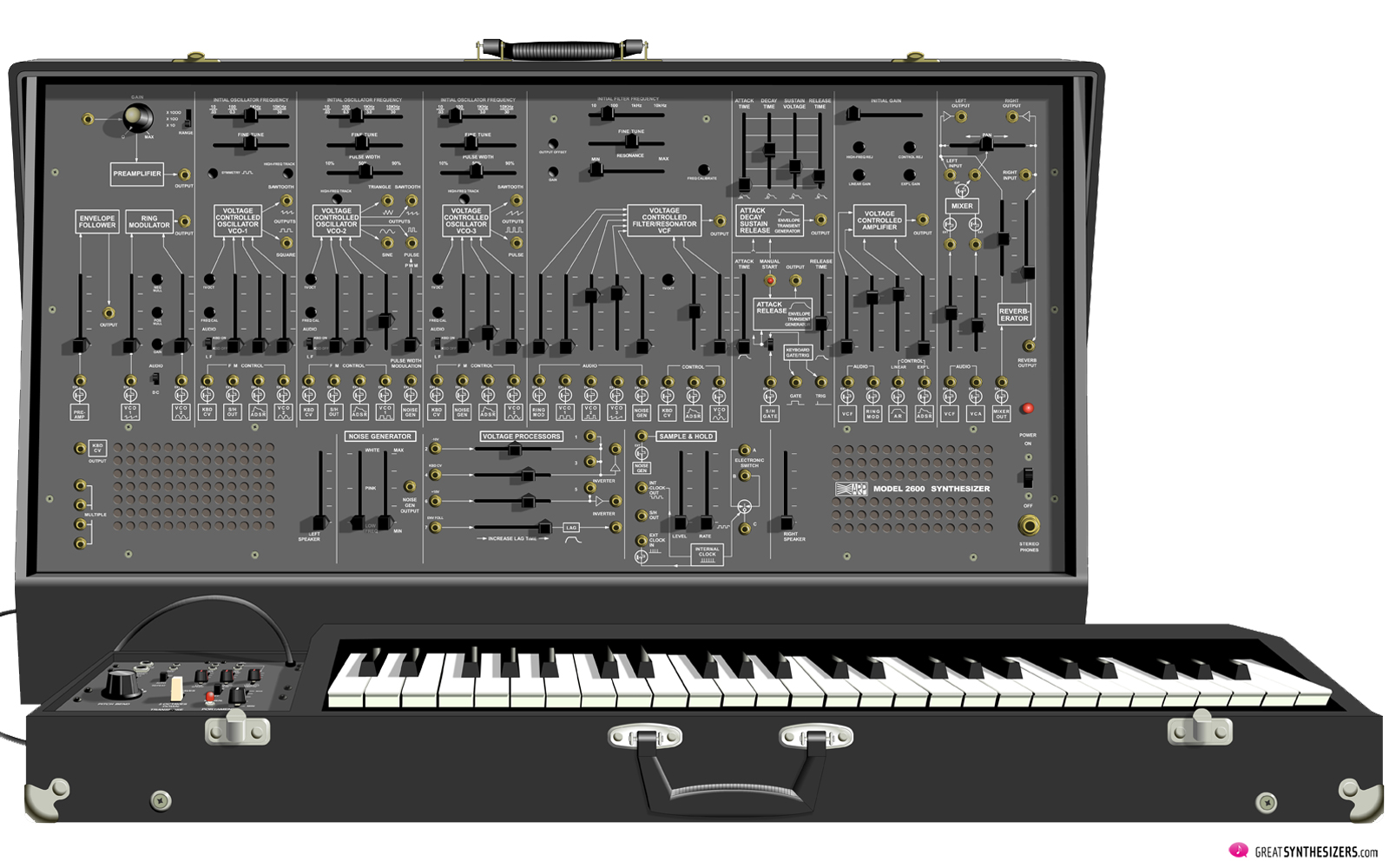
Open / Download Poster ARP 2600 (jpg, approx. 24×16 inches, 5.5 MB)
Open / Download Photo ARP 2600 (jpg, 2900x1900px)
Finally, here’s a template for individual patch sheets – for writing down and saving ARP 2600 sound settings …
Open / Download Patch Sheet ARP 2600 (gif)
x
“Holy ARP” – a great ARP2600 song by John / The Crystal Method (2018)
ARP 2600
Semi-Modular Analog Synthesizer
Monophonic / duophonic
Links:
Vintage Synth Explorer
Discrete Synthesizers / Arptronic (ARP 2600 Upgrades von Phil Cirocco)
Short Blog to an ARP 2600 with CMS Modifications
AMSynths – ARP 2600 Module (3HE Format)
Arturia – ARP 2600V
Review / comparison:
Studio Electronics Boomstar 4075 – the ARP substitute?
Open / Download:
Poster ARP 2600
Patch Sheet ARP 2600
Picture ARP 2600 with CMS Modifications

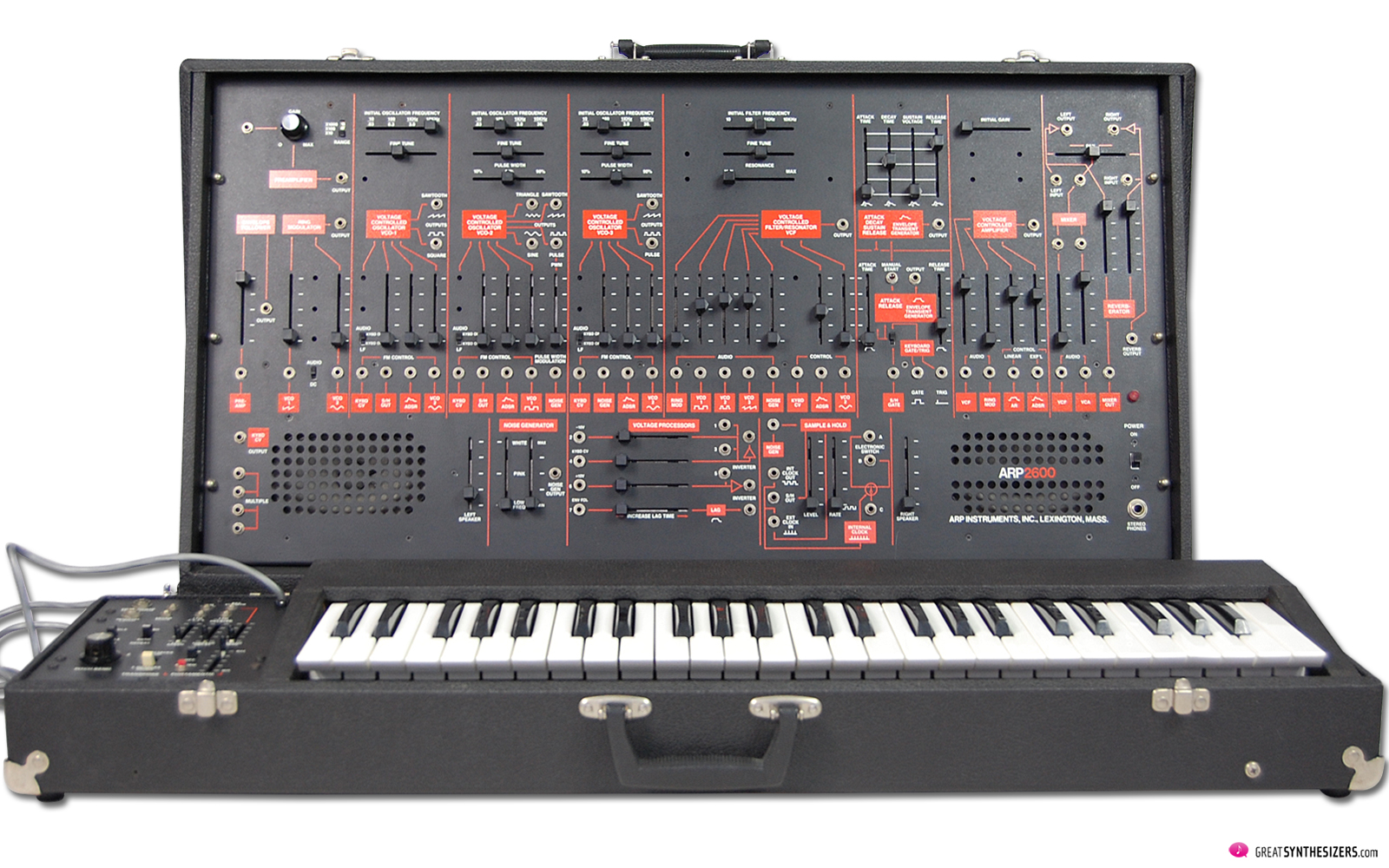
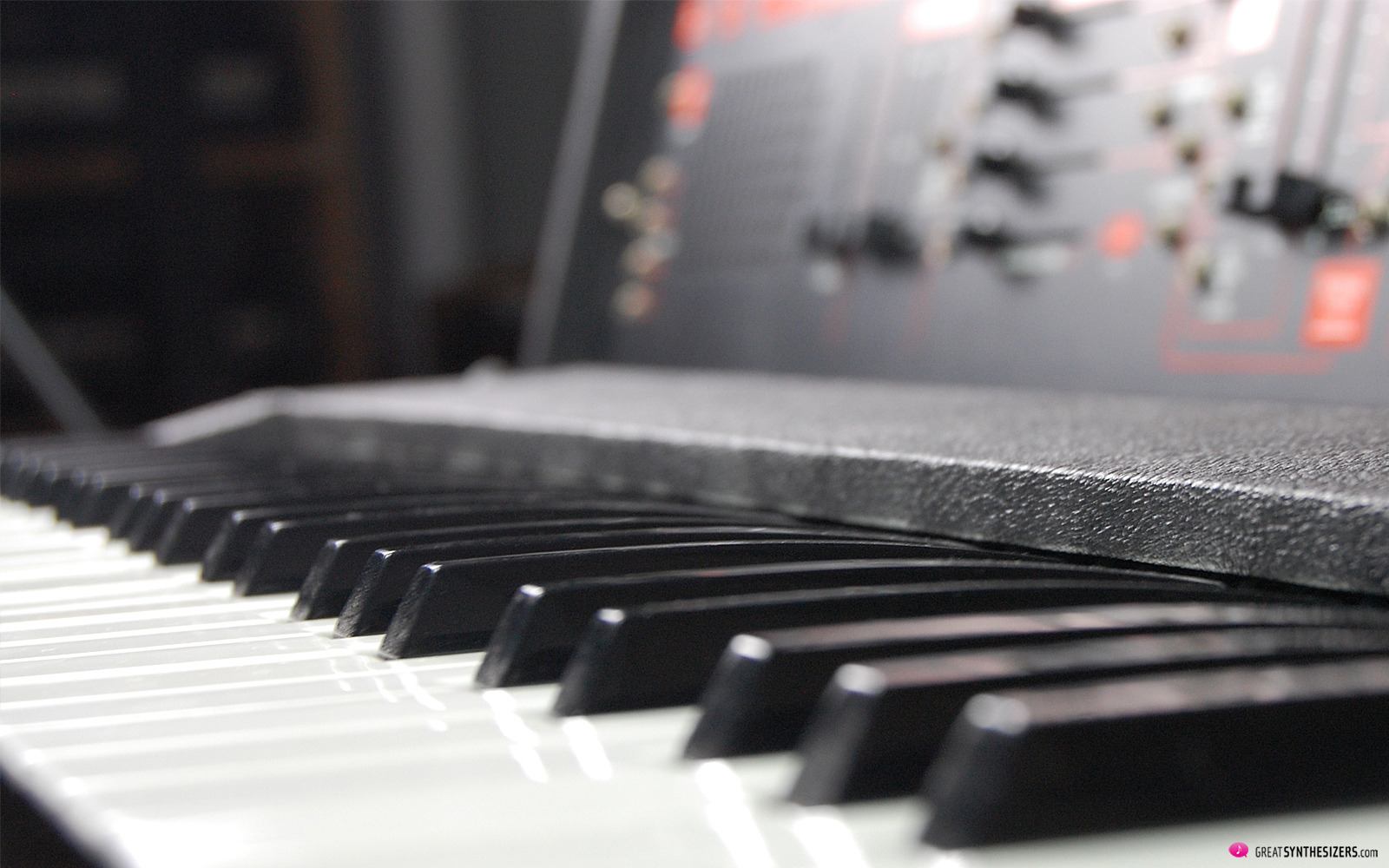
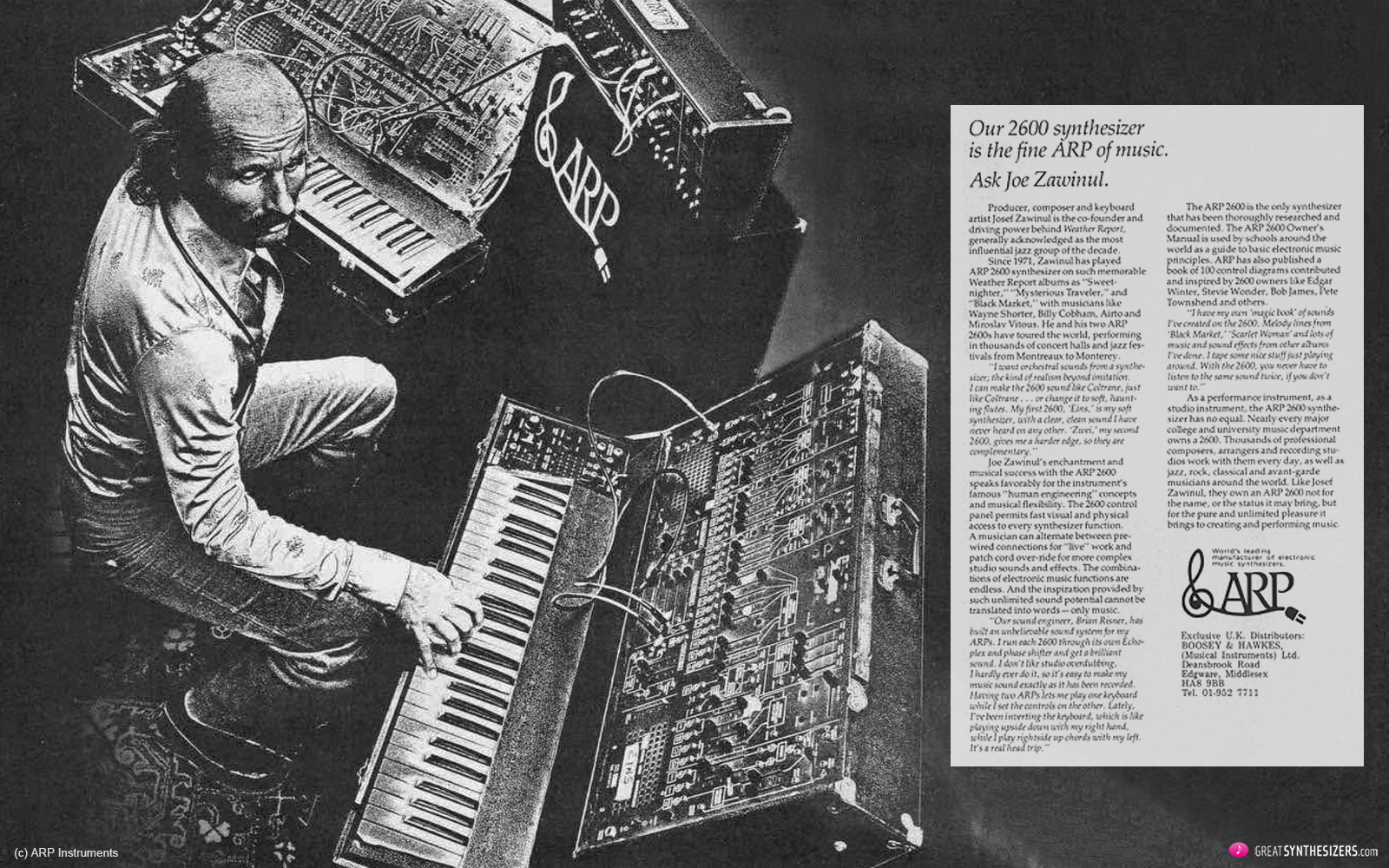

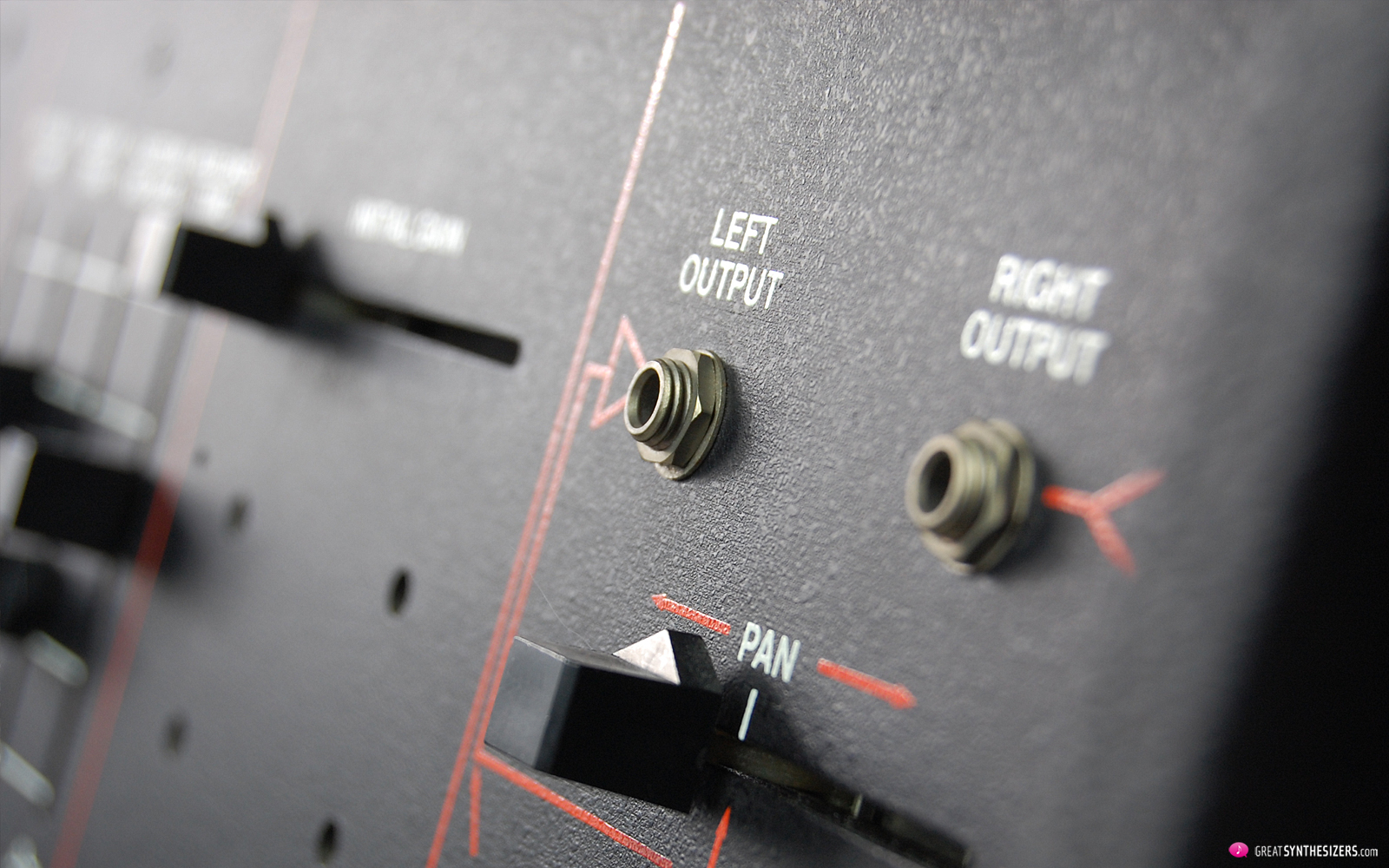
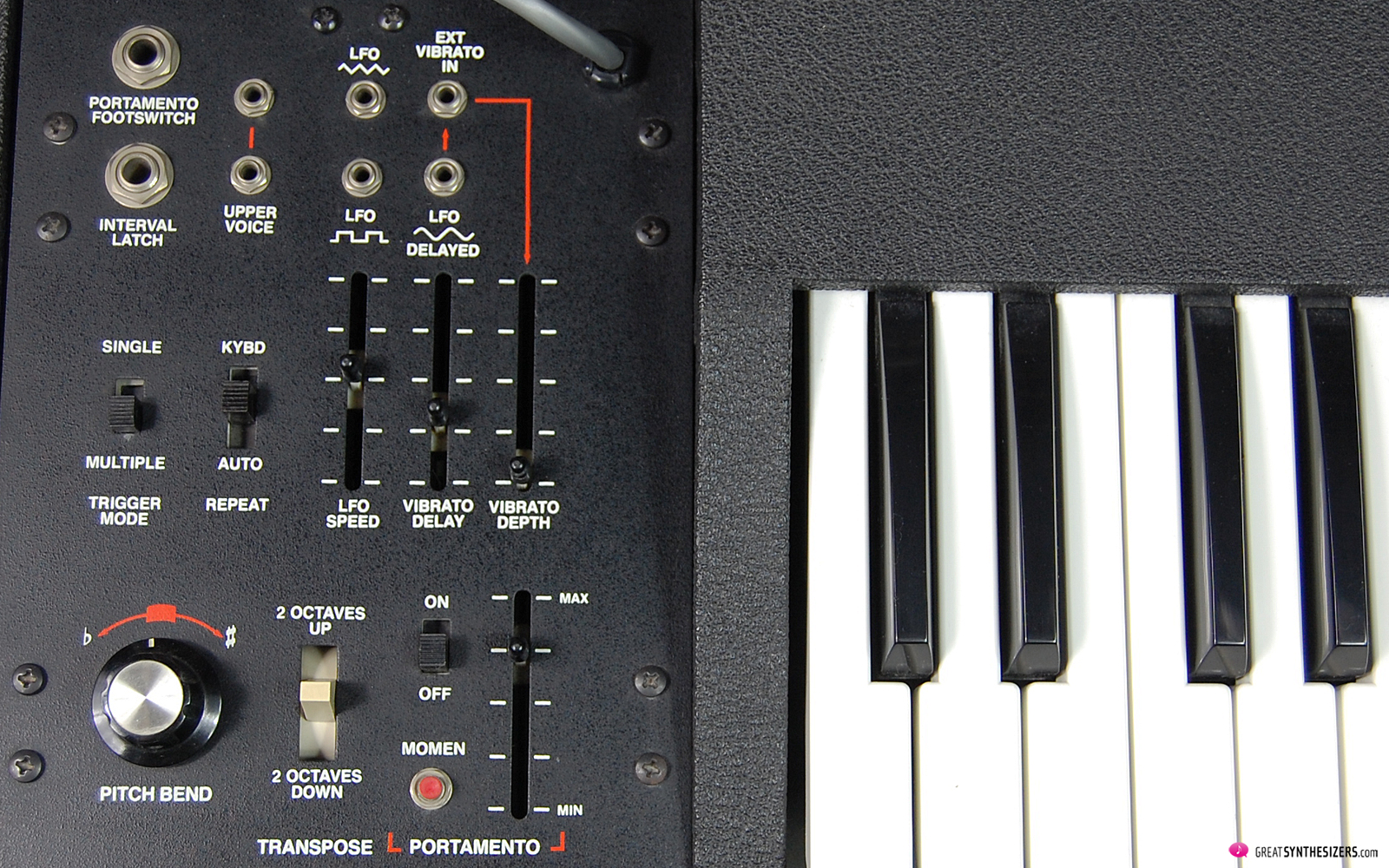
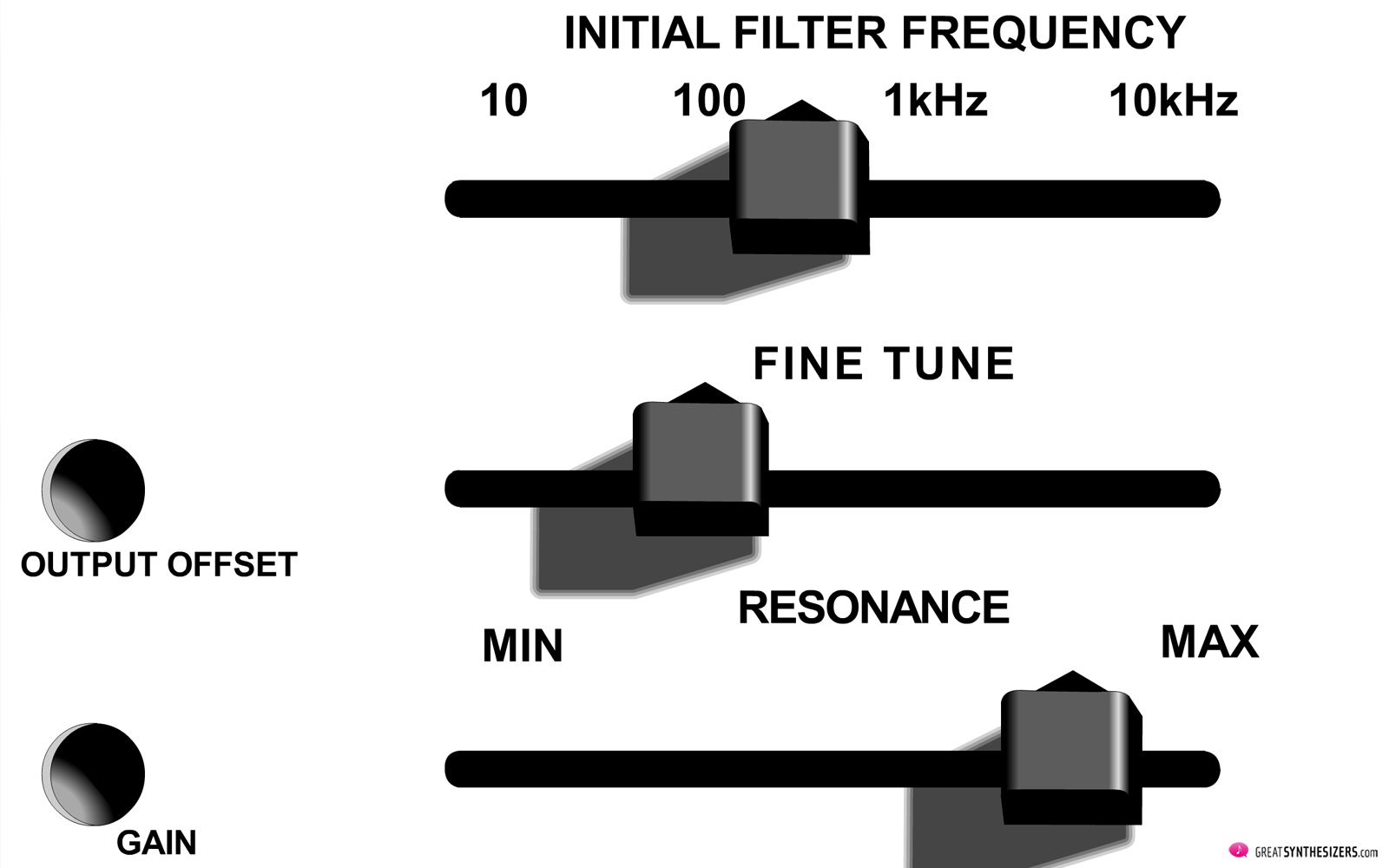
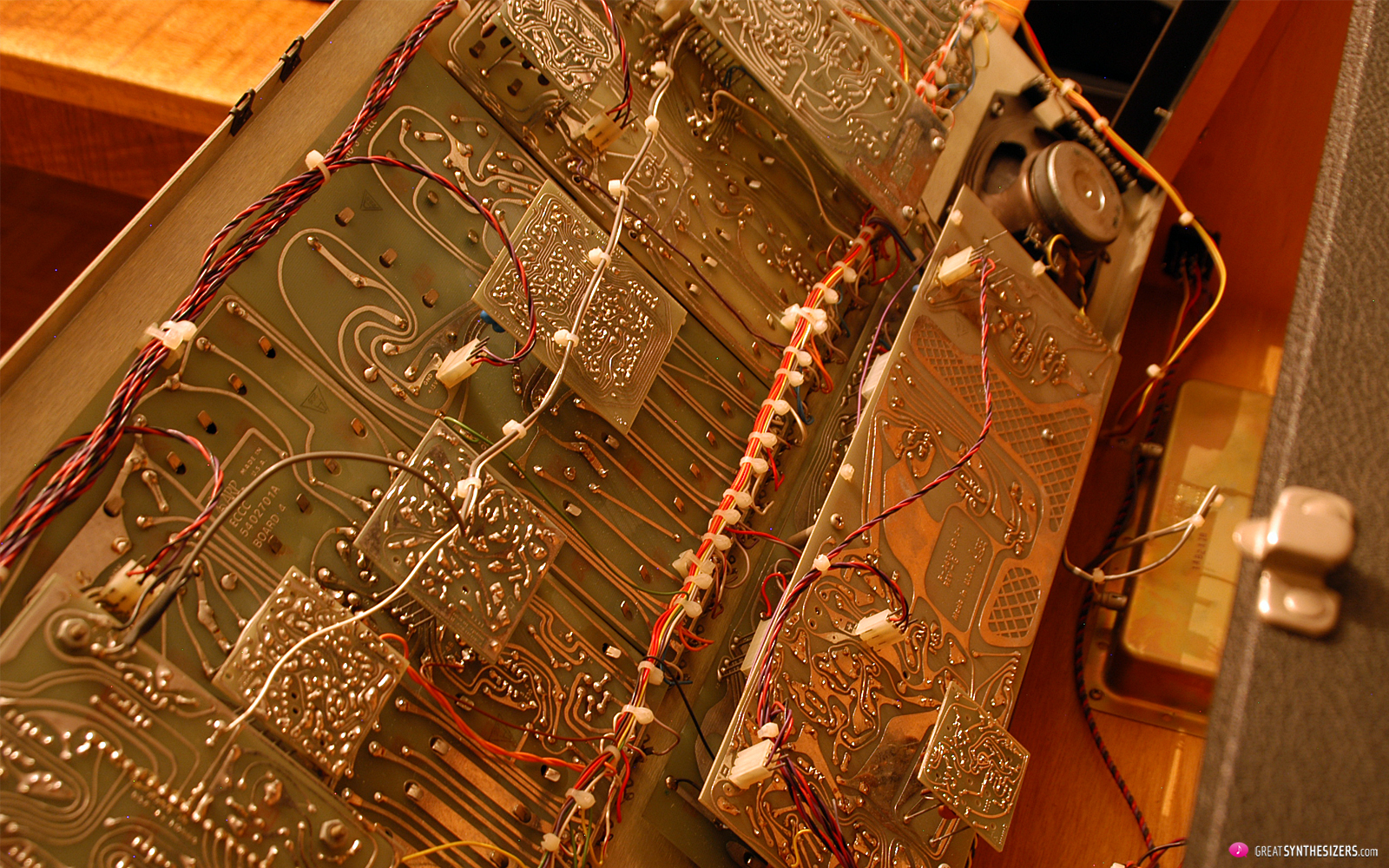
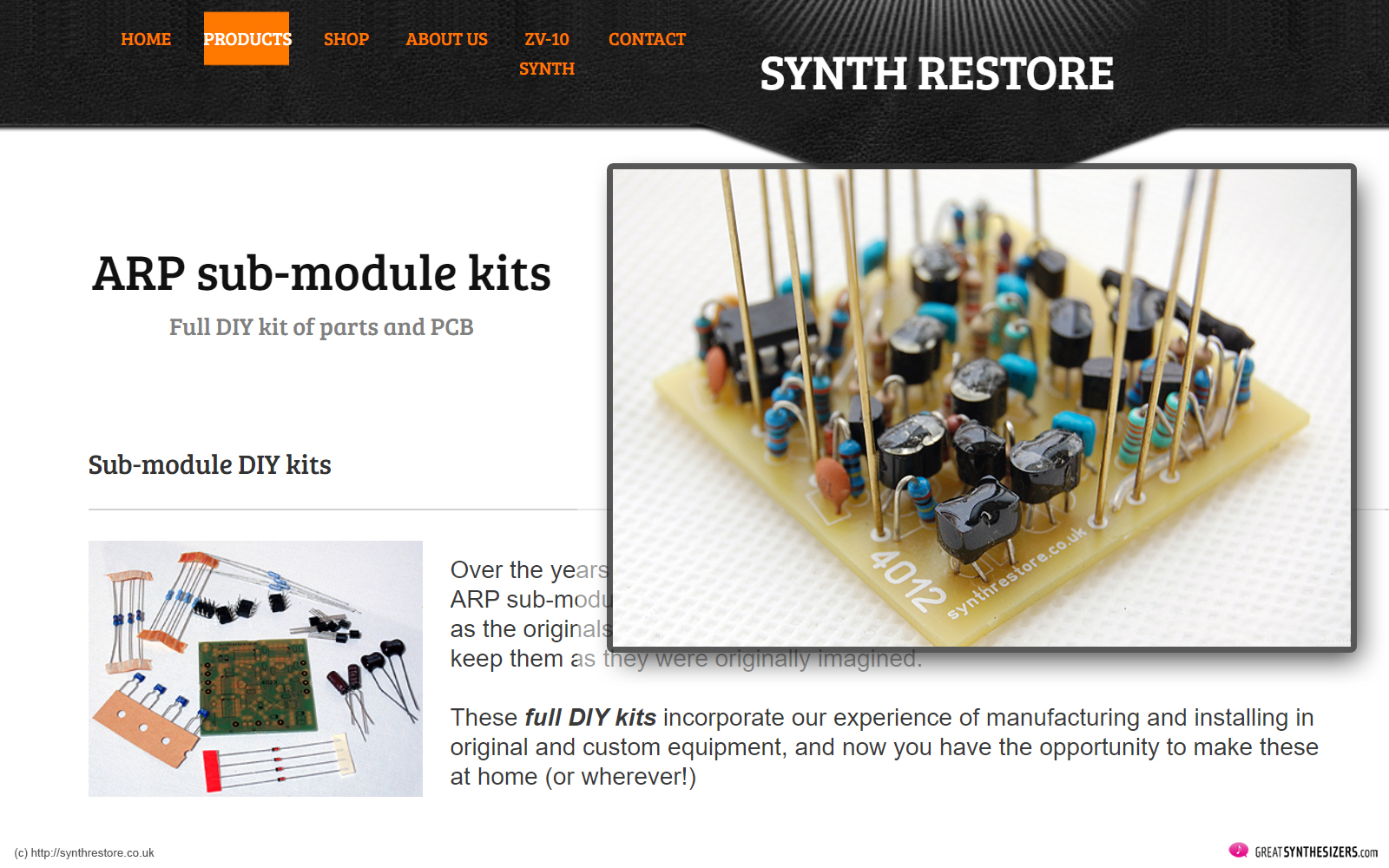
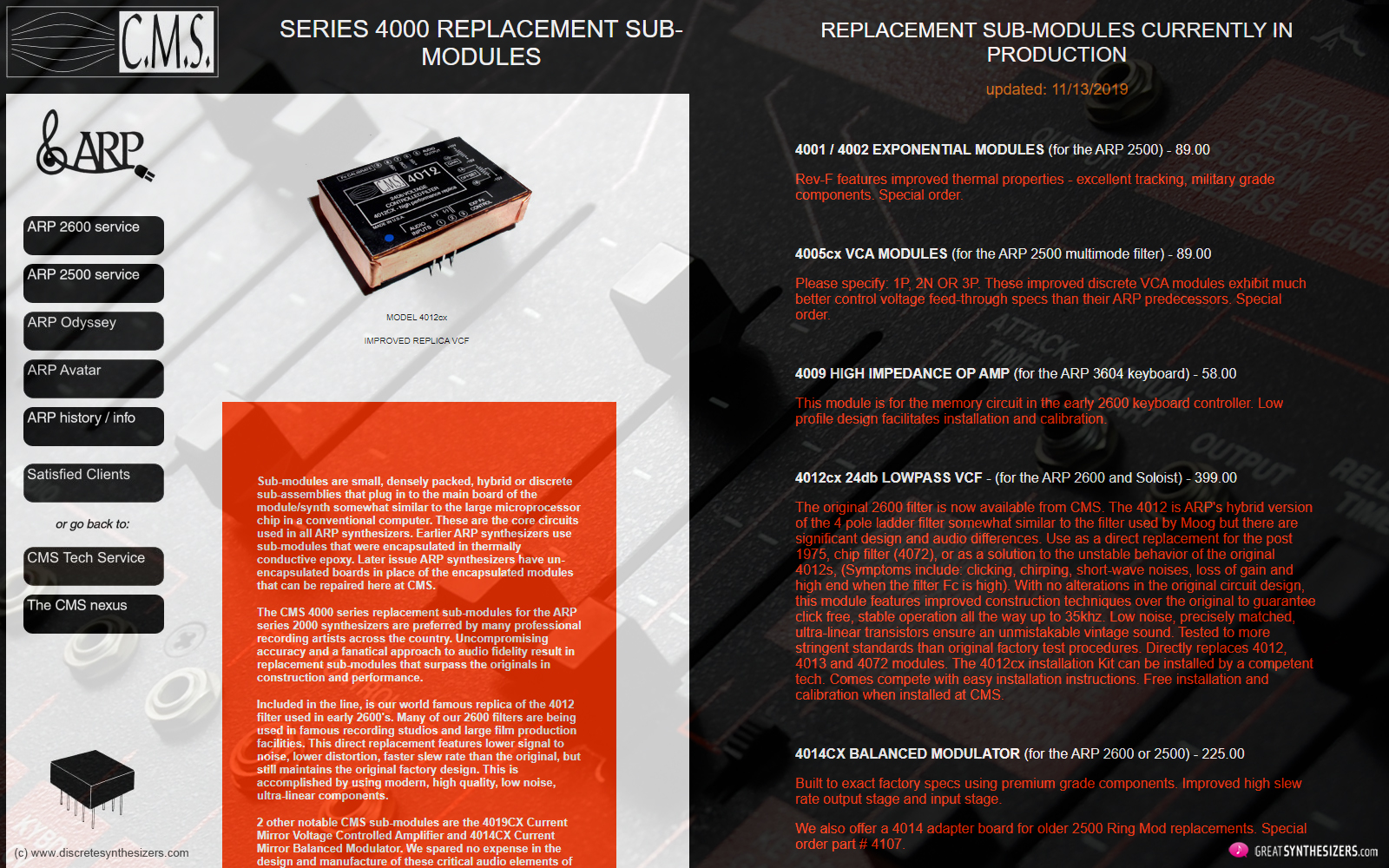
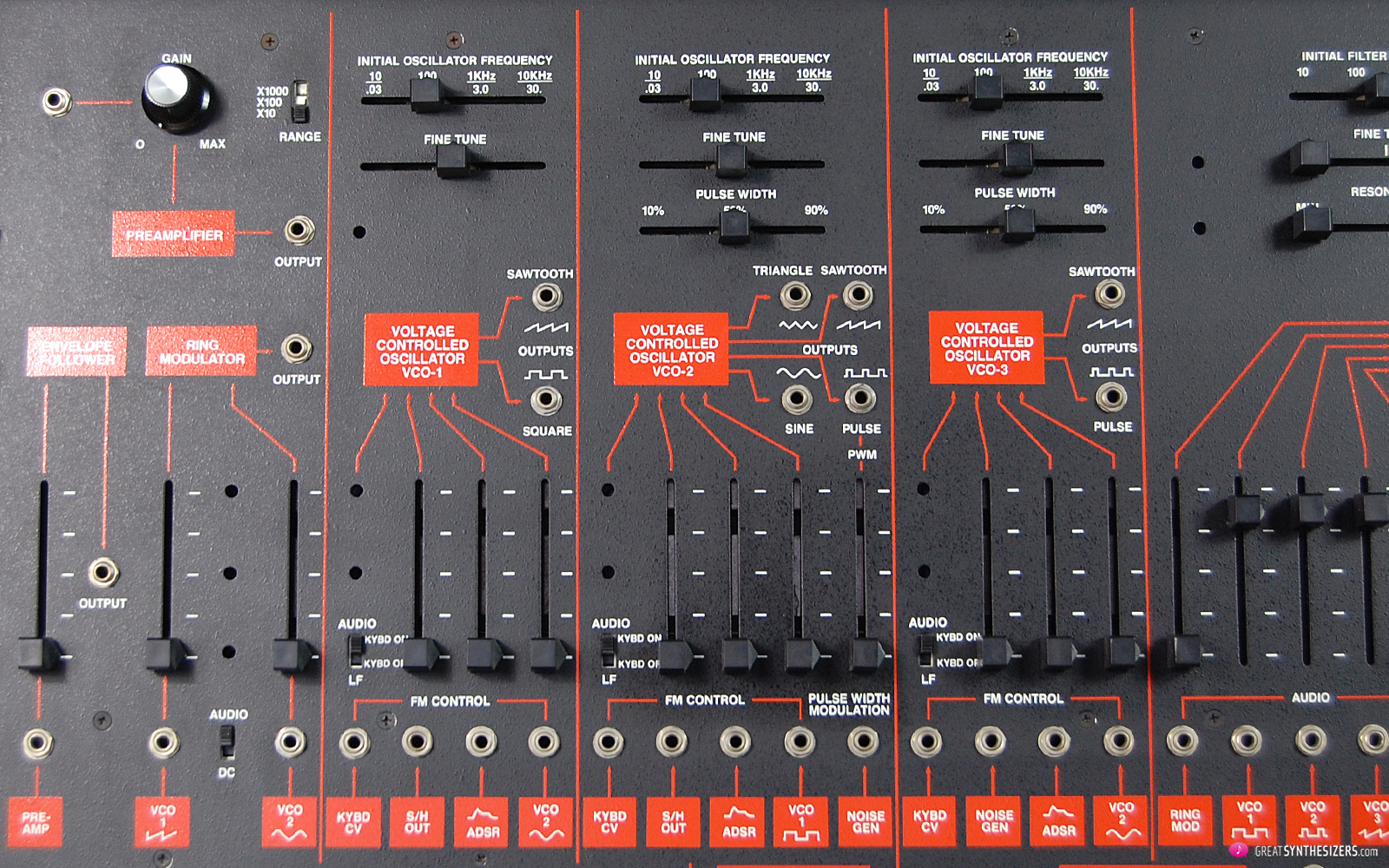
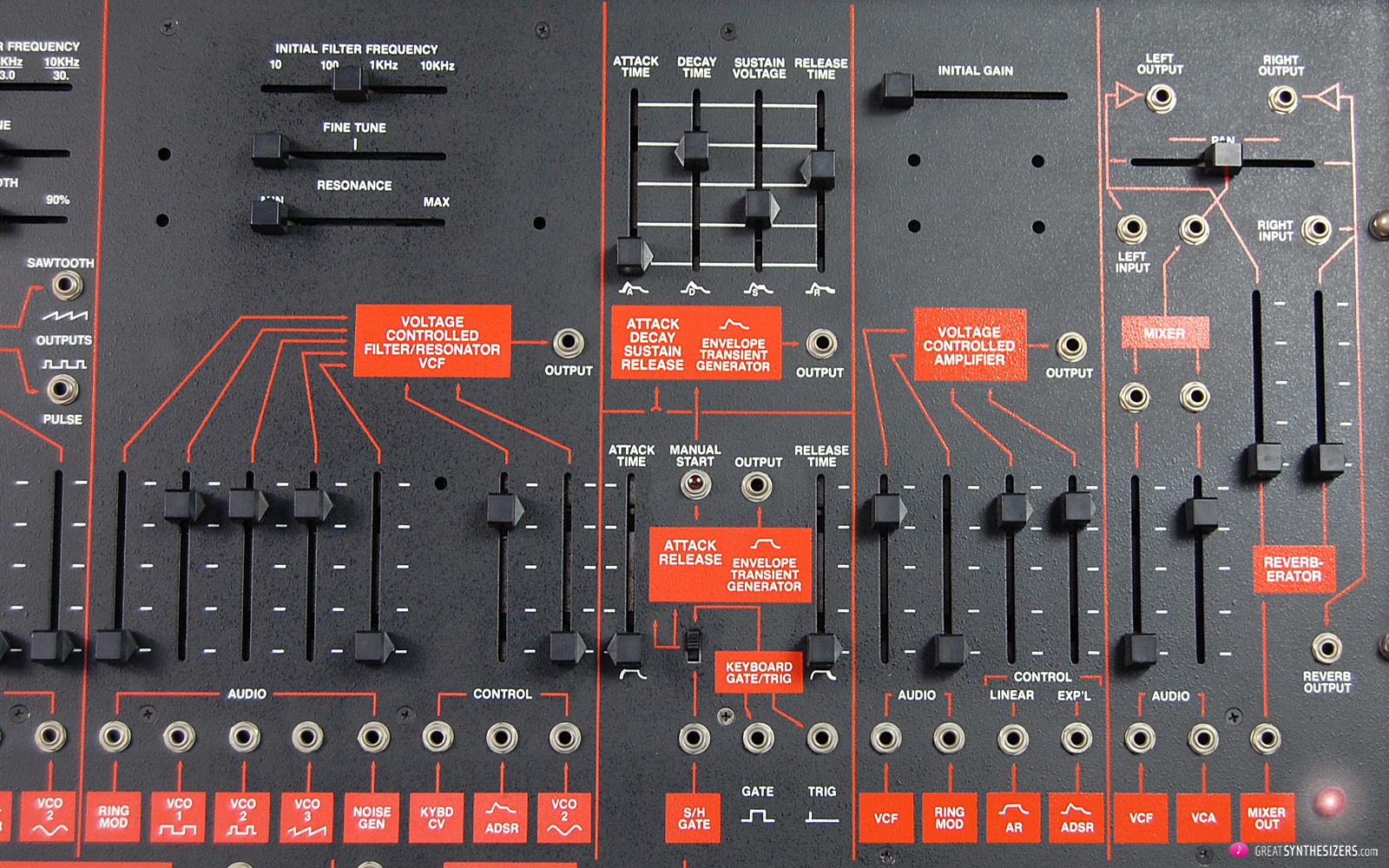

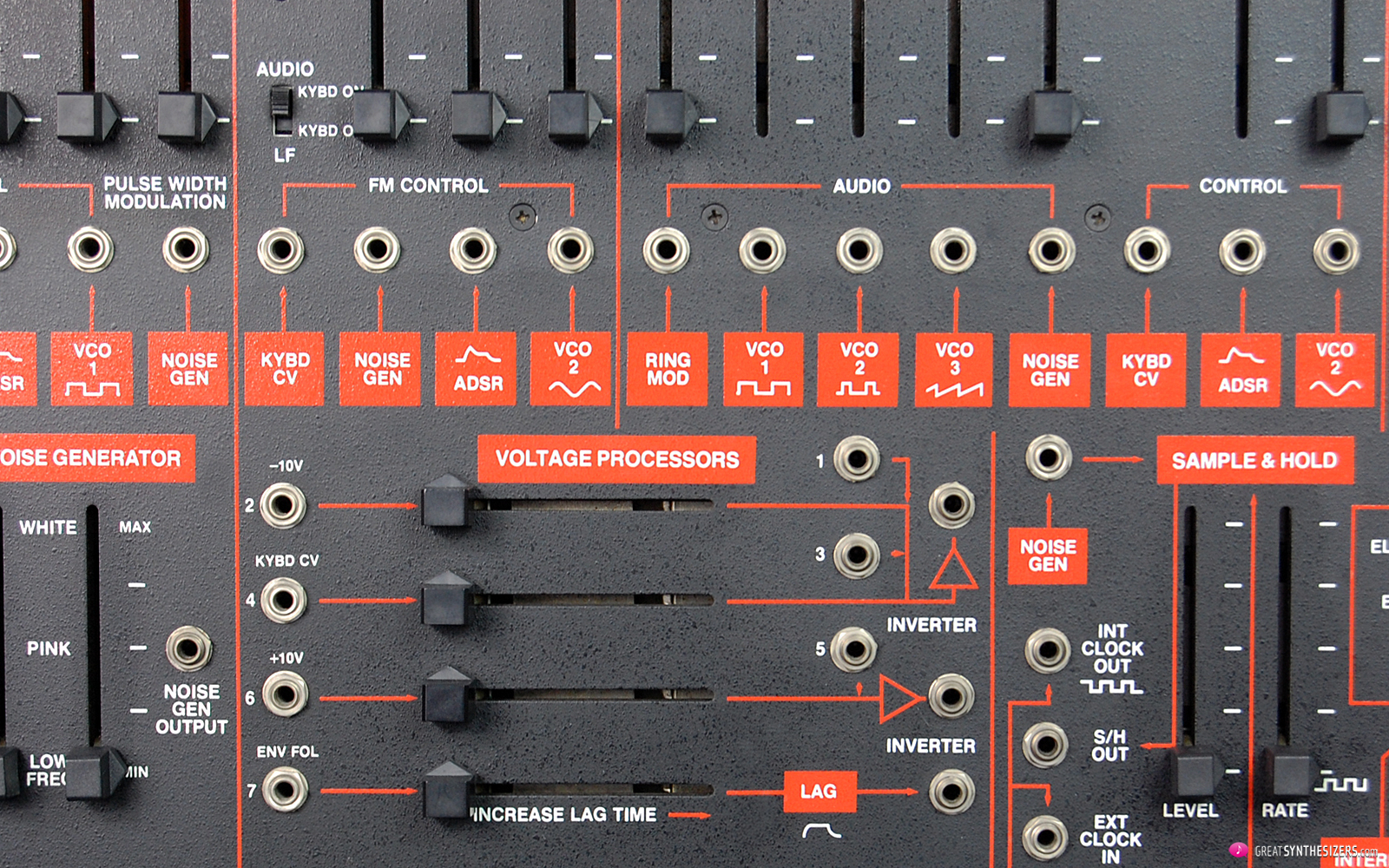
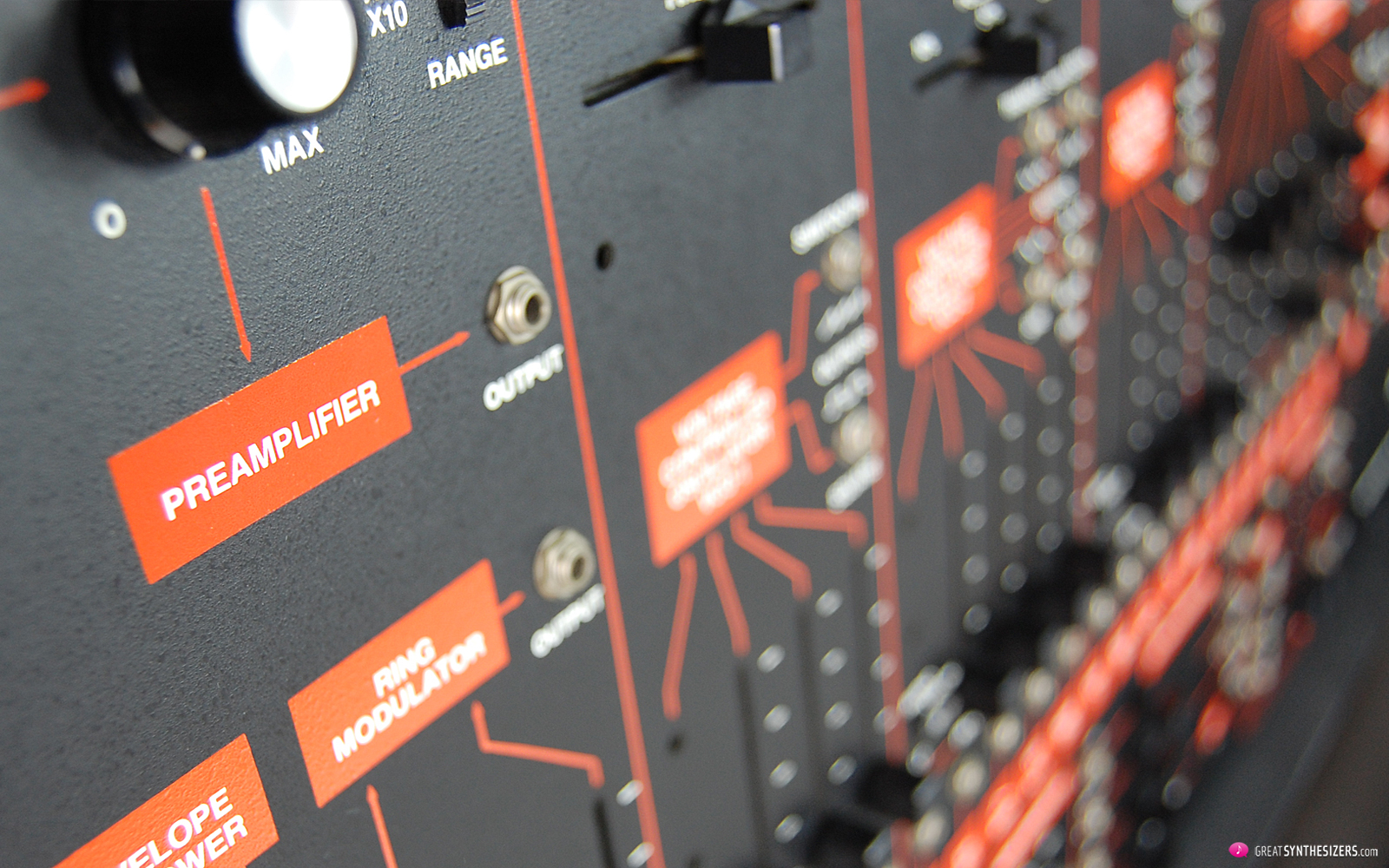
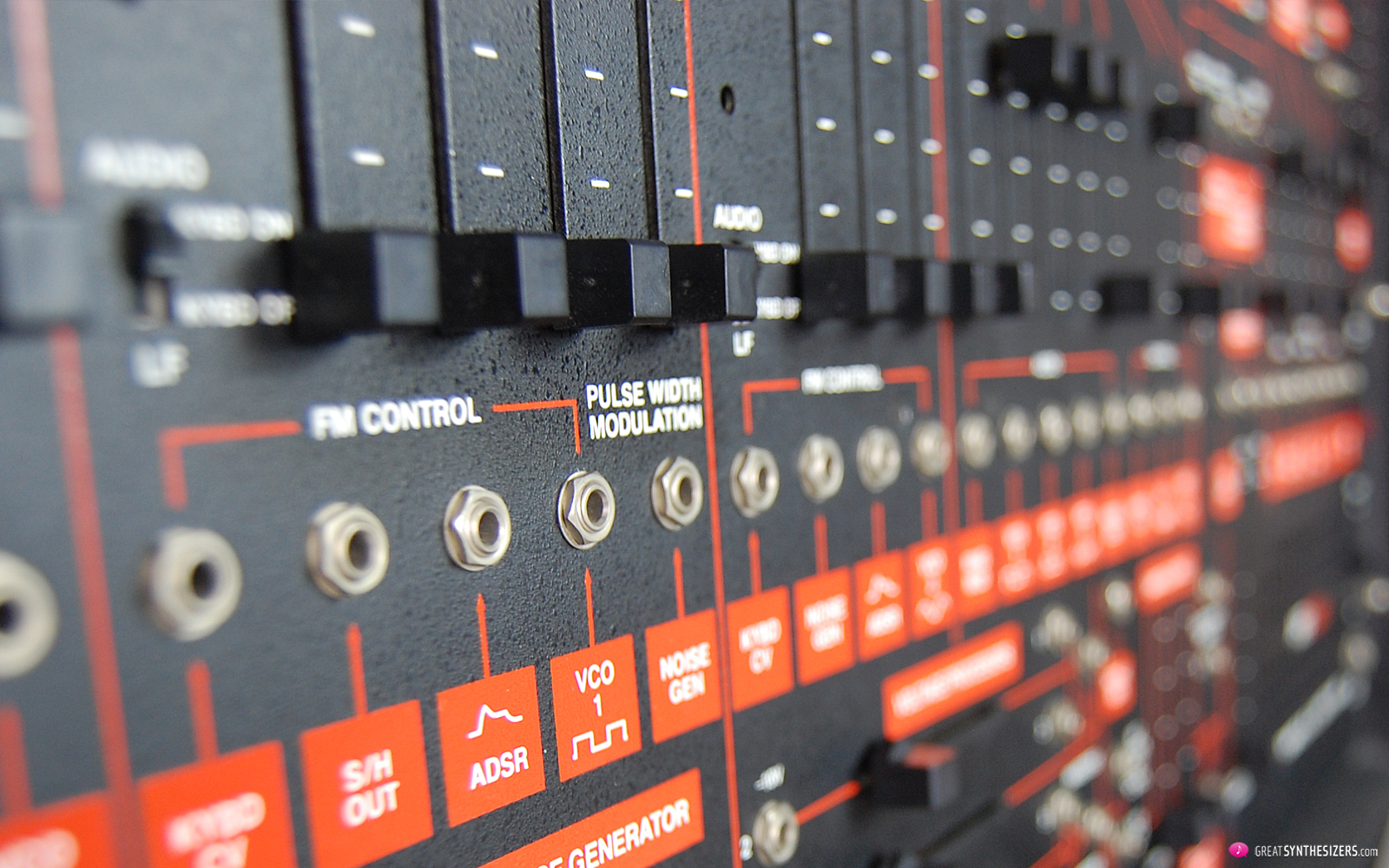

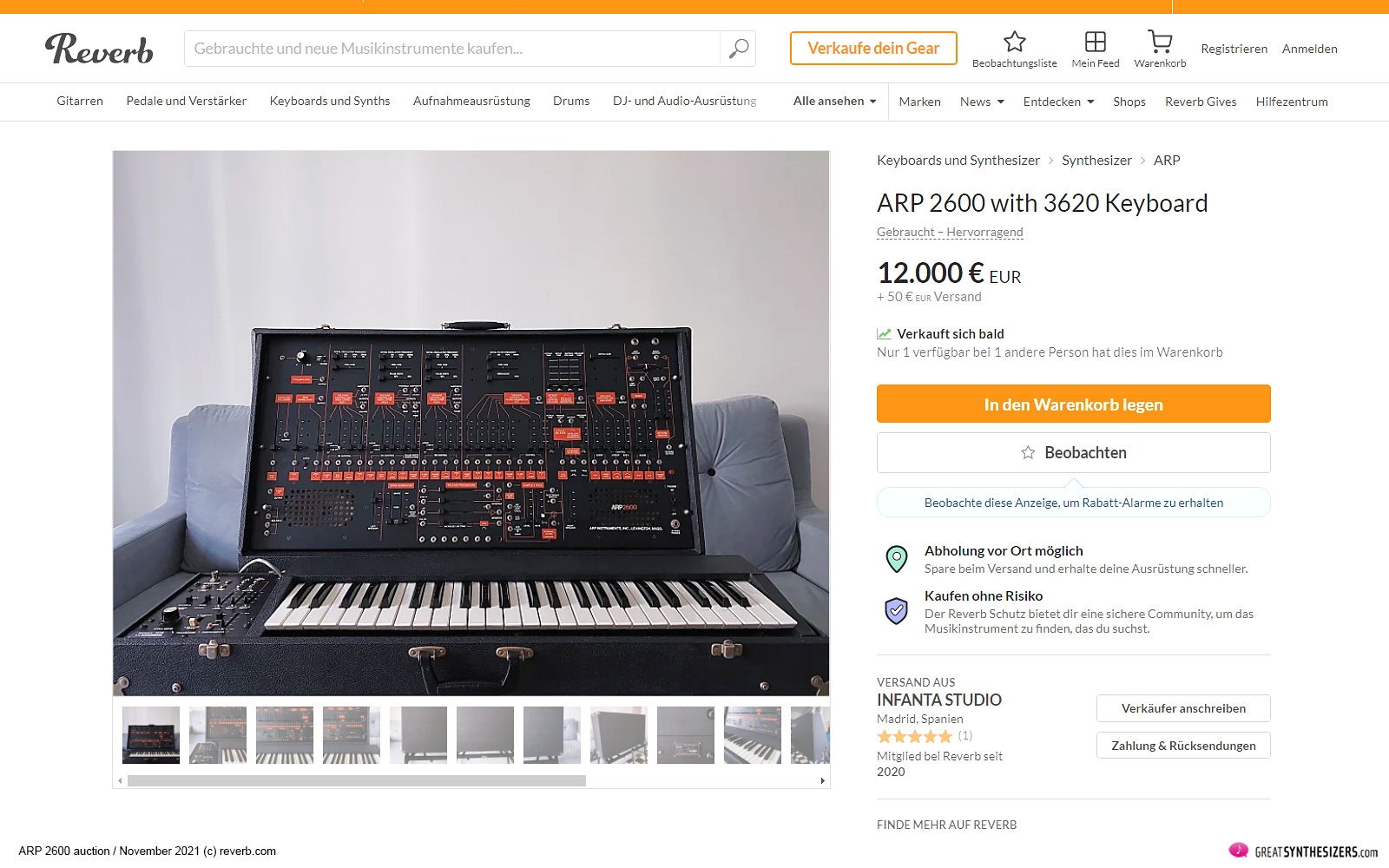
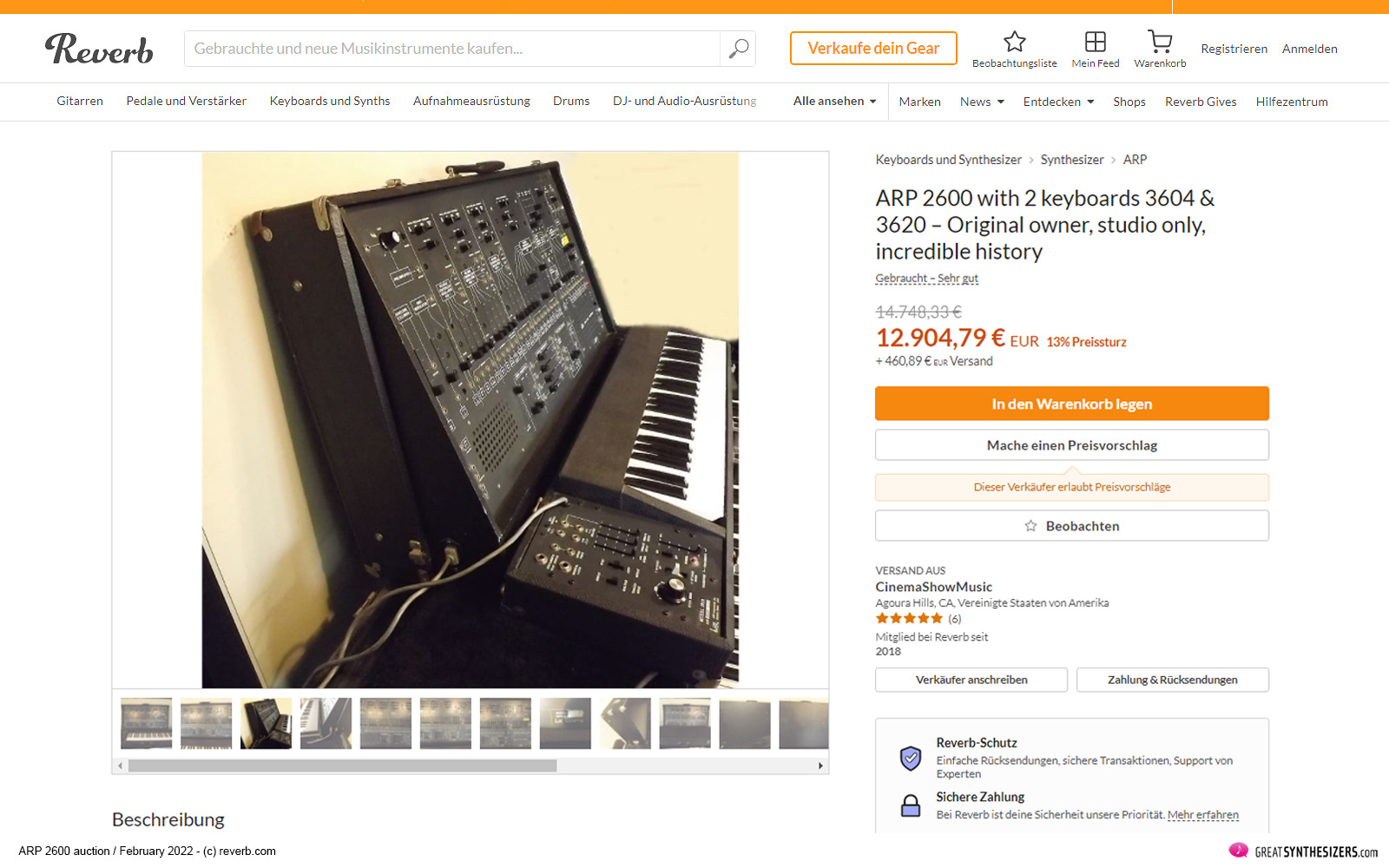
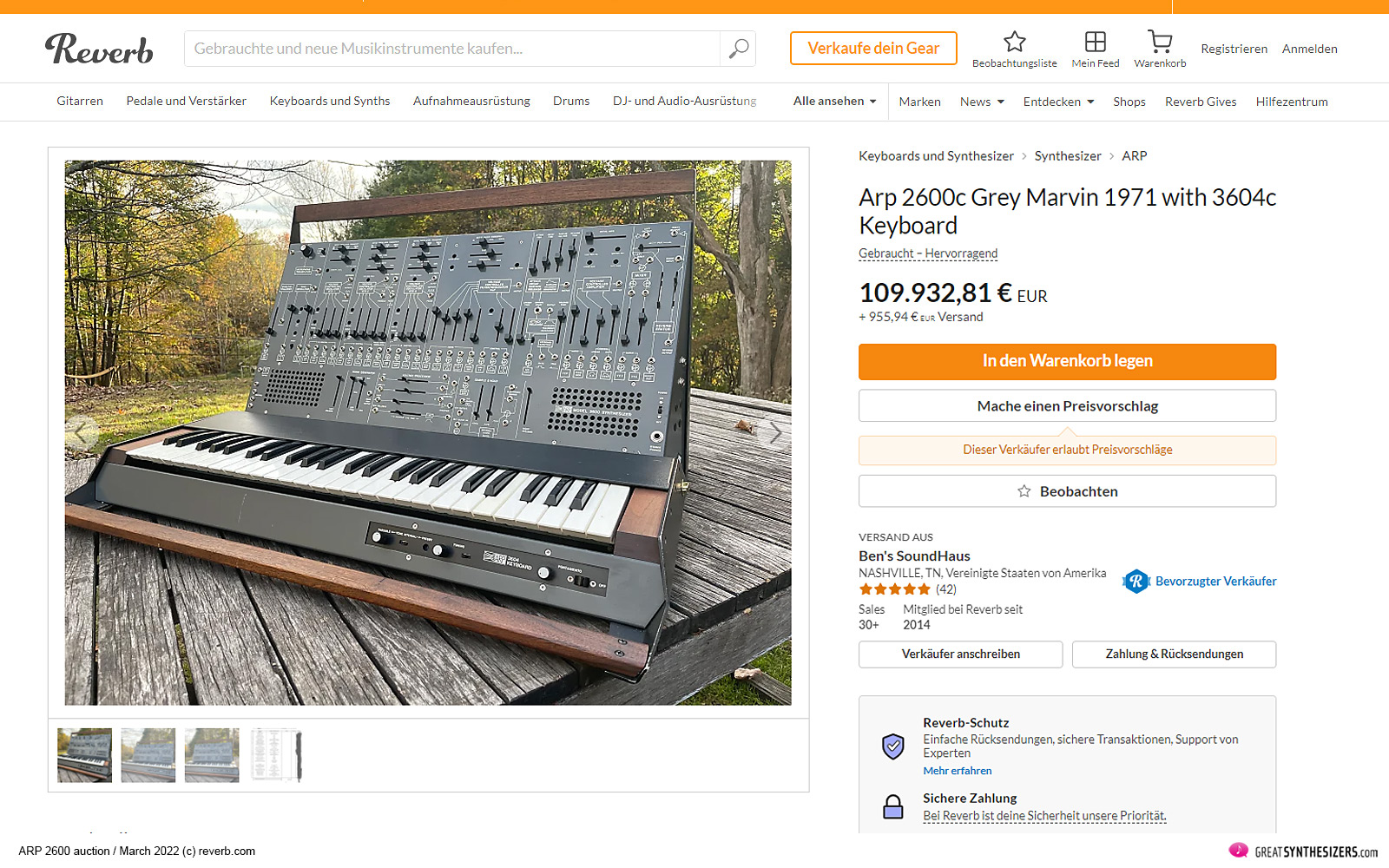
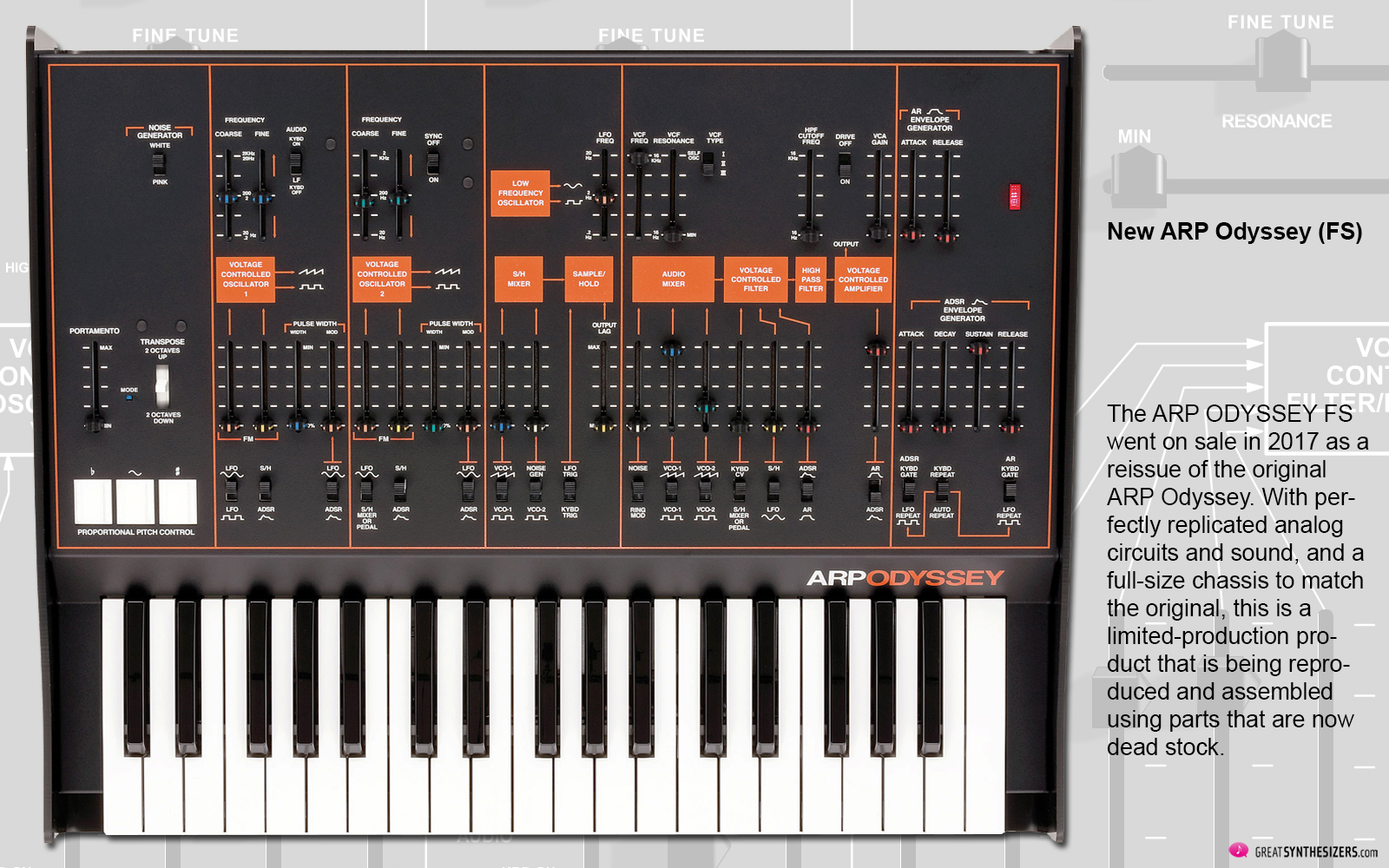
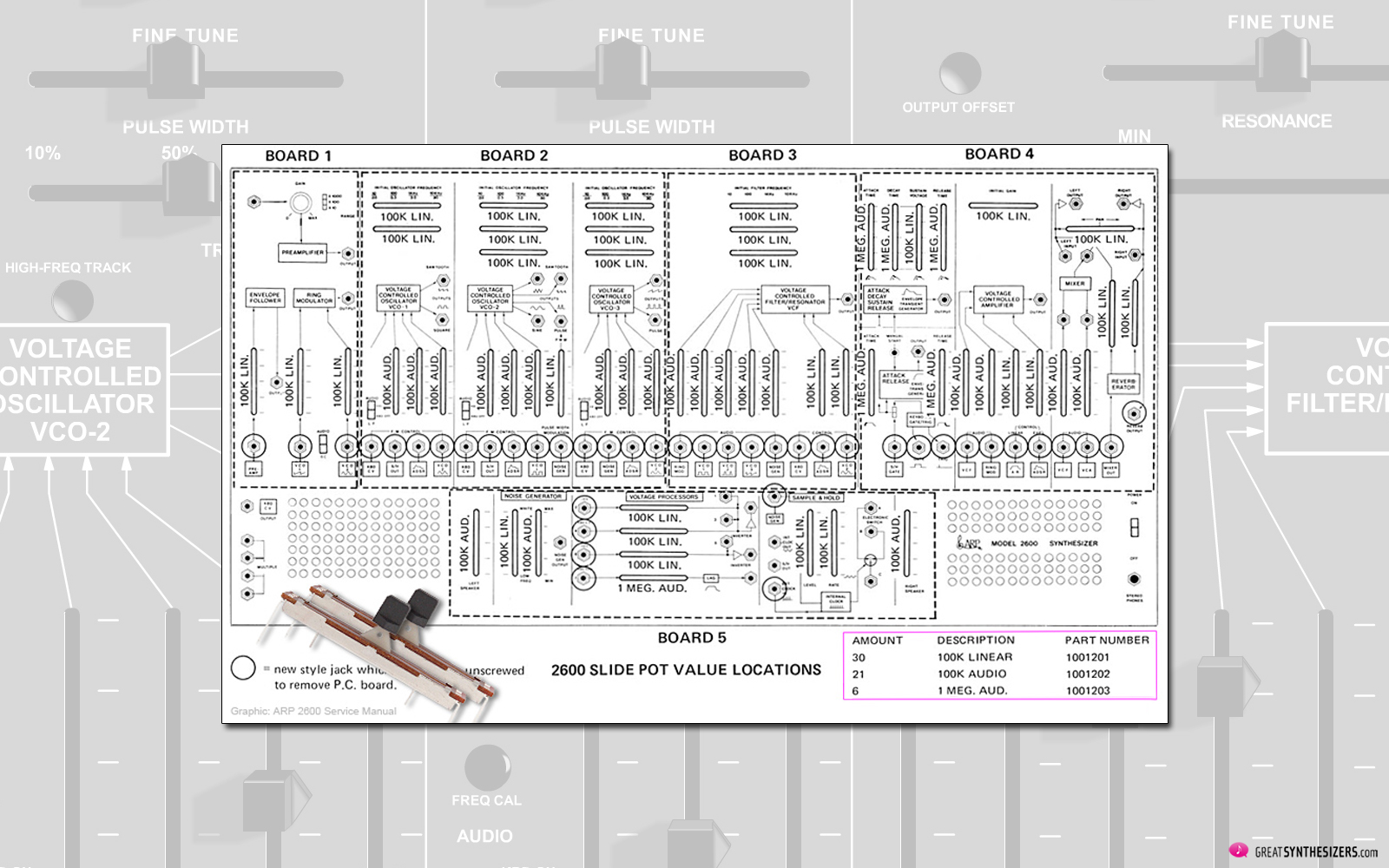
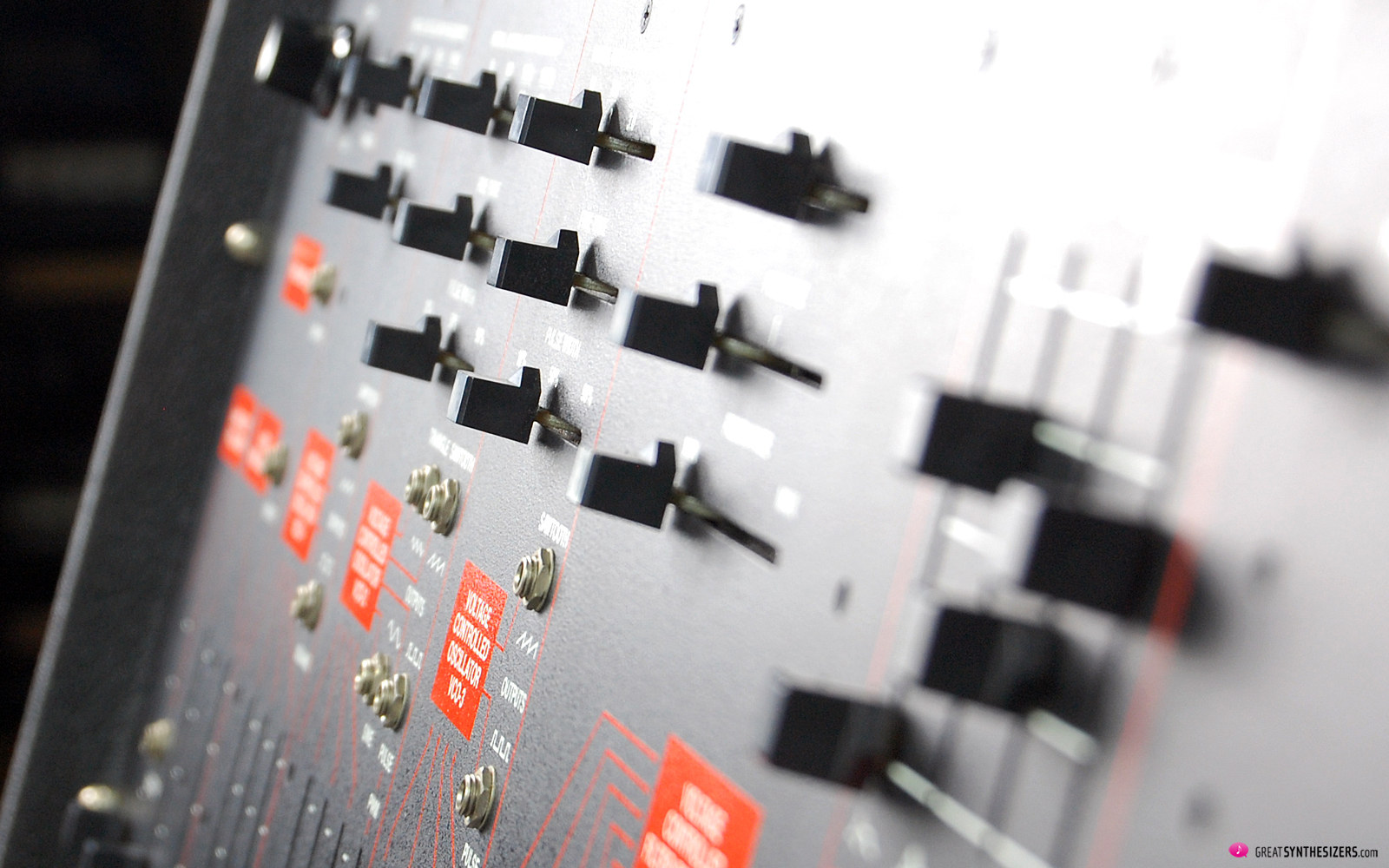

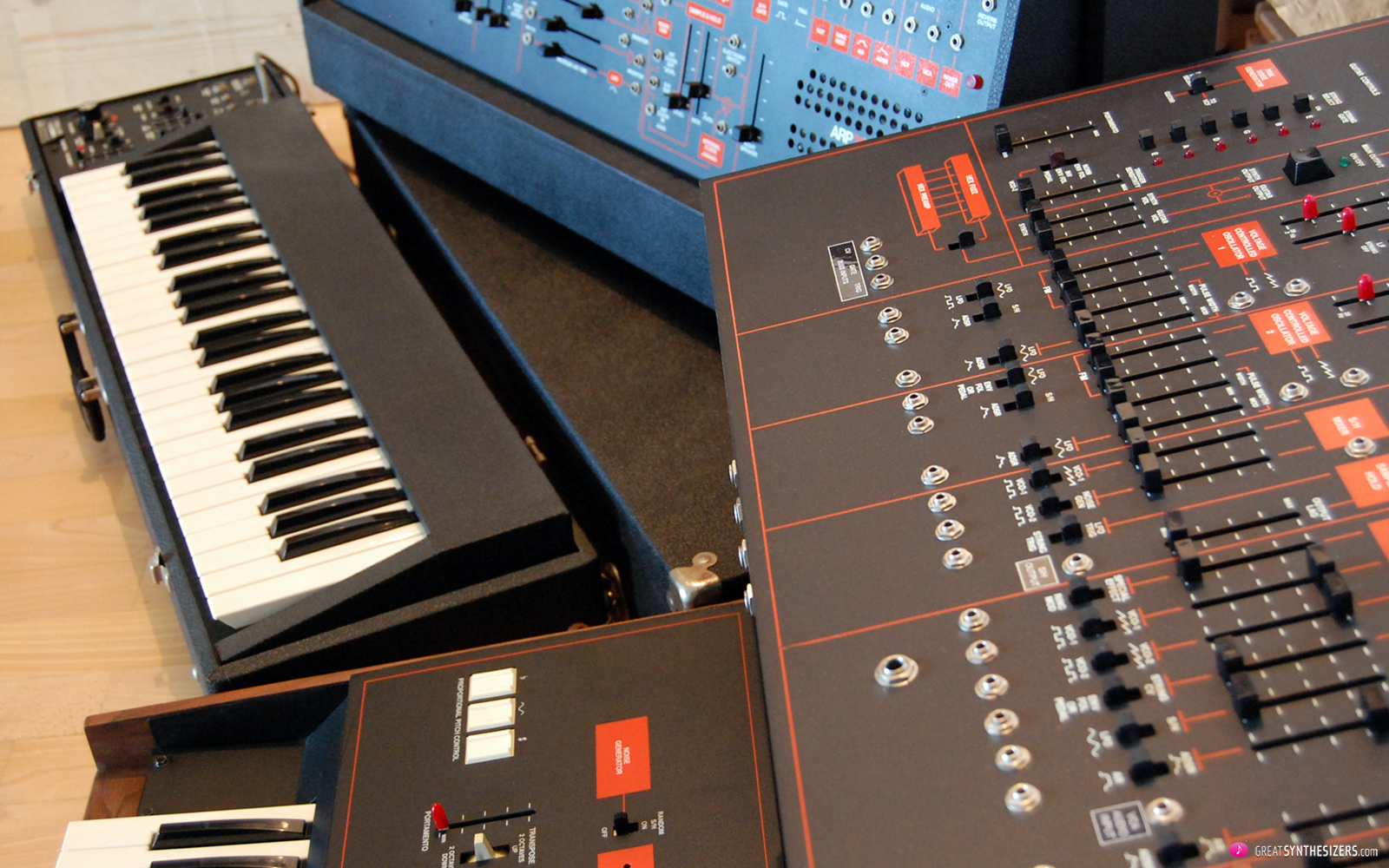
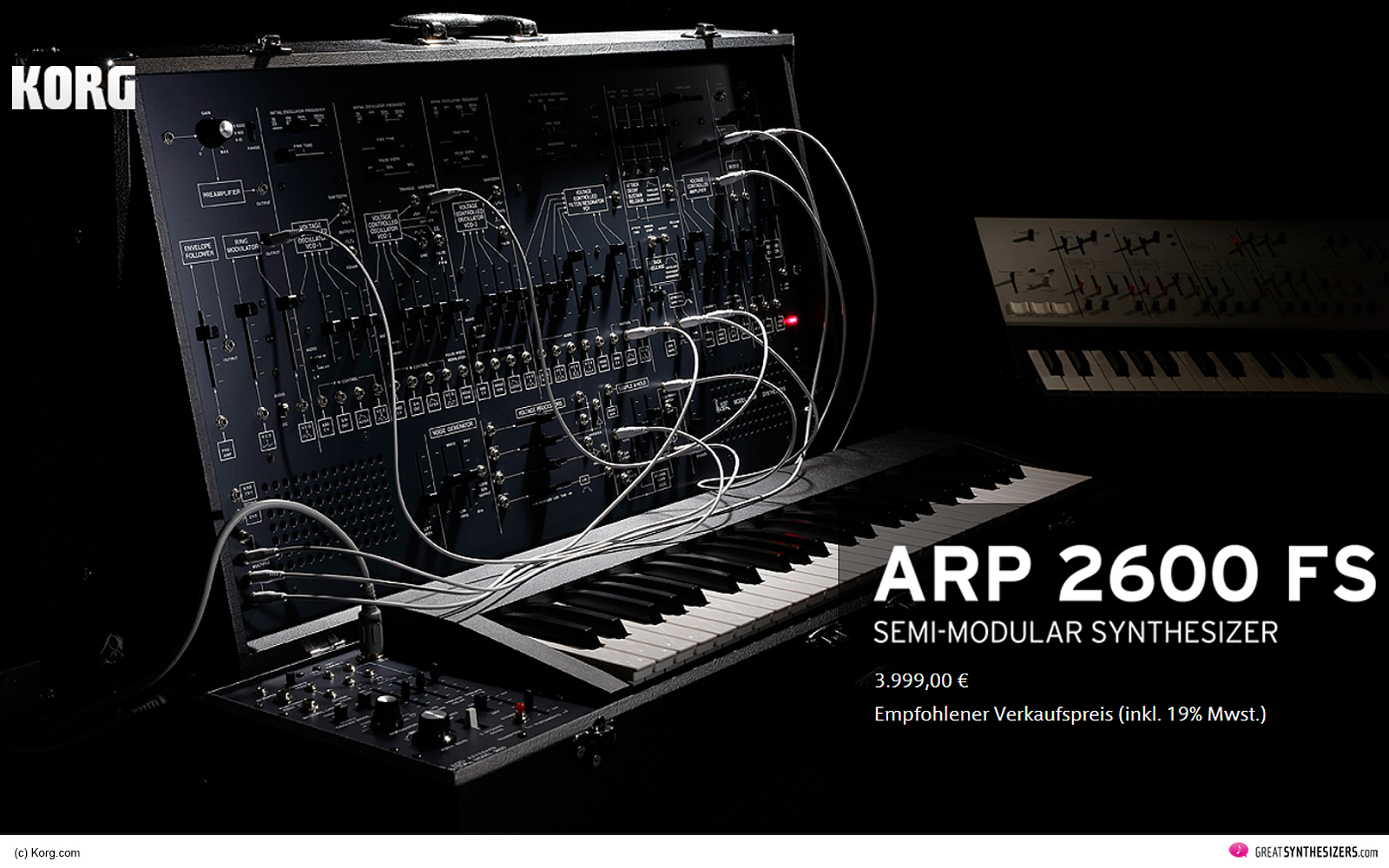
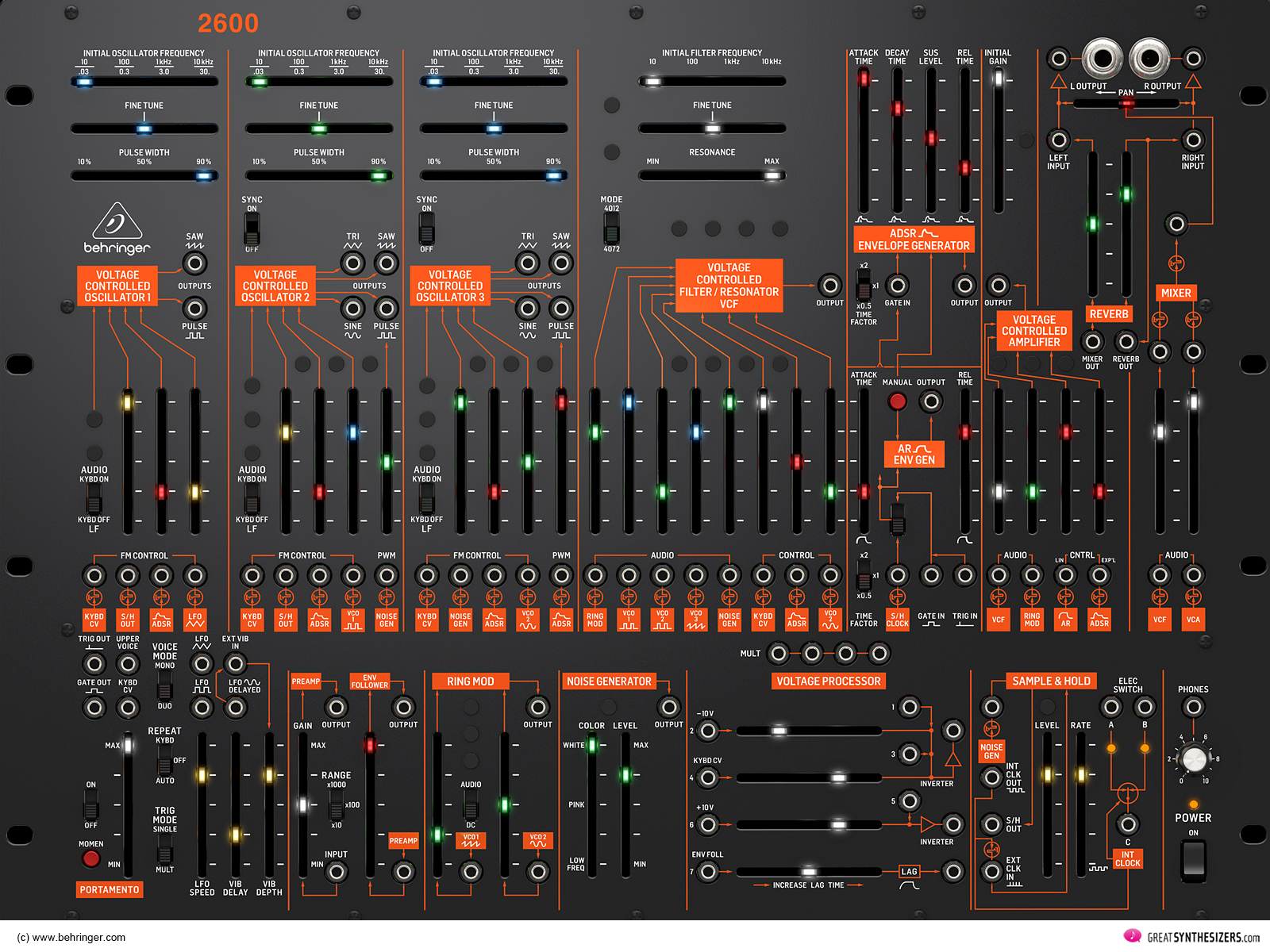
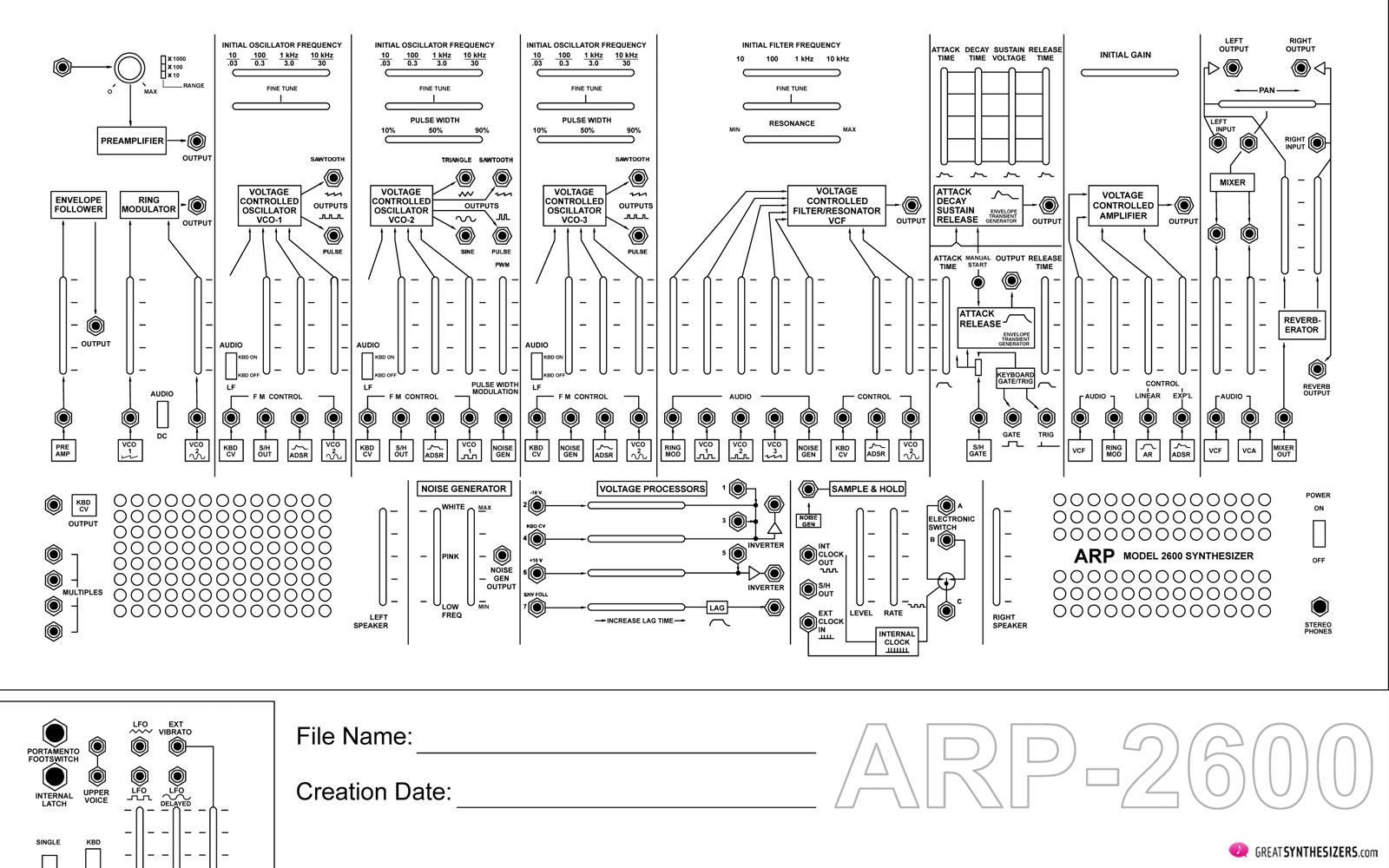
Your demos are outstanding as usual! I think this site is the one source I really trust to give the ‘real sound’ of a synth in its reviews. Whatever it is about your recording and streaming setup, it is very nearly flawless transfer of sound that show the true depth (or lack of depth) of the synth.
… thanks a lot !!!
Great page! I have the 2600V, and I nearly got offered a real 2600. But from what you’re saying they tend to be overpriced, even though the ‘desire factor’ is enormous! :-)
With out a doubt, next Korg synthesizer. 78% the original size, with all the filter options, and less than 1200usd.
Many thanks for this great review.
Yeah, excellent piece as usual, Theo. In terms of alternatives is the SE Boomstar 4075 worth a mention?
… yes, absolutely. SE’s Boomstars are a little expensive, but their sound quality is superb! (The “ARP” Boomstar 4075 is sitting here right next to me, I think a review will follow soon … :o)
Look forward to reading it.
Do you think there is a point in buying ARP Odyssey if you already own 2600?
Hi Matt!
Some synth collectors might be interested in the varying filter sound of Odyssey MKI and MKII (which is again different from the 2600). But other than that: you really don’t need an Odyssey if you own the 2600 (the best and most flexible analog mono-synth you can get) …
:o) Cheers …
Thanks for reply Theo!! You just made my wallet happier ^^.
Hi, I am so happy to find your site again. I used to enjoy bluesynths alot, you actually made me want to get an Andromeda (and I did).
I have a pretty Analogue Systems modular system now, and am wondering how you made that Blade Runner sound on the ARP?
That distinct percussion type sound..how’s it done? I’d like to try and replicate it on my modular.
Great article! I got my 2 x 2600 (Grey & Orange) a few months ago, they are crazy and amazing! I just got my 3rd Grey and it’s on its way …
Lottery jackpot ..?
At one point I had 4 2600’s in a single custom ash wood cabinet, run from a midi-to-CV converter by Roland – sold that for a Polyfusion Modular w/6 osc, sold that and built a 16 osc synthesizers.com unit, The “dotMONSTER” – trust me, it does everything my Quad-2600 could do and more! (The owner of Planet X Records)
… oh, 16 VCOs should be enough :o)
excellent article, I have had the good fortune of owning (still own the orange 2600) and also Black in past. Love it so much.. use it every day.. I had a VCS3 for 25 years and loved it but sold it and do not miss it. Could never sell the arp however. I’m probably one of the few people that use the arp to make insane sounds with total disregard to tuning etc.. It is one of my faves for crazy electronic sound design (as is the 100 and 100M)
I have a 2600P v3. I am actually considering a Korg Odyssey for the reason that it may give limited midi capability to the 2600 by means of its midi in and cv/gate outputs.
Hello Theo
Fantastic site here! I’m planning to buy a arp 2600. I might have a choice between two ARP’s (with moog filter) but with different keyboards: one got the 3604 keyboard and the other the 3620.
Which one do you recommend? And is it a game breaker? I mean: does it make a huge difference?
It’s nice to see some “melody” samples of the arp 2600. On youtube, it seems like the 2600 is only made for (great) FX. But as a songwriter, I feel like this synth has much more to offer, to give great inspiration to songs. Am I right here? I never played one before,, I can only guess. But I got a feeling this is, like you say, a holy grail Not just for FX, but also for melody/inspiration?
I got a minimoog here and a prophet 5 here. I guess it’s not overkill?
Cheers
Mathieu
… hello Mathieu
The keyboard makes a big difference. I’d go for the 2600 with 3620 keyboard. It gives you an extra LFO (so you don’t need to use one of the VCOs for simple modulation purposes). And it has a superior keyboard transpose system: a +/- 2 octave switch, plus a +/- 1 octave pitchbend knob. Which means a switchable / selectable area of 6 octaves at your fingertips, which is excellent. (And especially useful, since the ARP 2600 has “no” octave settings coming with the ocillators … while, on the other hand, the VCO’s continuous audio range is of great musical use as well.)
Absolutely correct – the ARP 2600 can do everything. Everything analog, at least. It’s a fantastic (and highly powerful) bass- and leadline-synthesizer. And, of ourcse, a goldmine for effect-sounds of all kind (oscillator-crossmodulation, filter-FM, weird S/H effects, random noise sounds). I also like it a lot for doing sequencing / pattern music … with short, vivid, snappy electronic sounds (thanks to its fast envelopes).
Then you’ve got a Minimoog, a Prophet-5 and an ARP 2600. No, that’s no overkill at all. These are completely different instruments. All highly recommendable and extremely useful top-synthesizers. And if I’d need to choose only “one” of them, I’d go for the ARP 2600.
Catch it if you can!
Cheers,
Theo
This song was largely written on the Arp2600 in 2018!!!
Holy Arp by The Crystal Method
https://www.youtube.com/watch?v=KW7ECrrZPgU
… fantastic music – thanks, John! Just embedded the video in our report … hope that’s ok? Thanks again … lovely ARP2600 sounds!
I think the big advantage of the 2600 over ANY other analog synthesizer is it’s ability to put everything at your finger tips. Bob Moog himself said “knobs for precision, sliders for speed.” But if you add additional sliders for fine tuning as the 2600 does, you have the best of both worlds.
The big thing in modern recording is the idea of the “control surface,” born out of the pain-in-the-butt factor of operating DAWs entirely with a mouse. An Ensonic SQ-80 can duplicate 90 percent of the patches that can be done on the 2600, but the prospect of manually selecting each parameter and then adjusting the ONE value slider for every adjustment multiplies the PITA factor exponentially.
The 2600’s normalized default signal path, layout, and slider conceptualization makes short easy work of getting just about any analog sound quickly. It makes “getting experimental” a dream compared to other modular synths.
In the modern world, once you’ve discovered the new sound you want on the 2600, then if you need to perform it live, you can adapt modern instruments to get that sound. Whereas, prototyping that sound on the modern ones in the first place would be arduous at best.
You can’t devote 100 percent of your thought to creativity when 3/4 of your brain is tied down with selecting and tweaking parameters by code number.
Hello, Mathieu. (or anyone else)
still looking to buy an ARP 2600?
I have an early one with 3604-P keyboard I’m getting ready to move.
if you can provide a phone number, that is best.
let me know…
thank you,
Chris
Are you still looking to sell? And where are you located?
I’ve recently been able to buy a Korg SQ-1 analogue sequencer with the few pennies I have left from buying my 2600. I can’t seem to get the sequencer to play the synth. I have the sequencer CV patched to VCO1 Keyboard CV input and the gate signal connected to the 2600’s S&H Gate input (with the switch above it in the higher position).
I think Ive got myself confused with my patches, as I was sure it would work! Is there anyone who can help me out? :-)
… hi Ben … it’s all correct. Connect the Gate signal to the ADSR / AR section where it says S/H GATE – and switch to EXT (above switch is in down position). Then it should work. If not, then the Gate signal from the SQ1 is not strong enough. The envelopes should trigger in any way, independent of the CV coming in … so, there should be a sound once the Gate signal is active. Hope it works … Cheers, Theo
Great, thanks Theo! It turns out the SQ-1 was indeed not giving out enough voltage to trigger the Arp’s envelope (although the Arp’s output was constantly on when I switched on power to the SQ-1.)
My friend came round with his Frostwave Fat Controller sequencer, and that works fine, even closing the gate correctly, so the 2600 isn’t constantly sounding.
I can only get VCO1 to respond to pitch voltage from the sequencer, by of course connecting the pitch CV to the VCO1 > FM Control > Kbd CV. But where do I patch into to get the other VCO’s to follow pitch?
Maybe I should go back and read the excellent manual! :-)
BTW maybe I need to use the multiple to get the other VCOs to play…
… yes, you probably need the multiples. Split the CV-signal and feed it into every single oscillator (into KB CV, or any other input – where you then have to adjust the sliders to get the correct octave trimming).
… or, I’ve figured out, via the KBD CV jack above the multiples, which is actually an input! (I’ve heard about this famous mis-labelling somewhere before.) I wonder if Korg and Behringer, with their new versions of the Arp 2600, are going to correct this? :-)
Very nice and impressive – once in a life i´d like to touch an ARP 2600.
Best and all of luck and greetz from mexico city, Bernhard …
… hello Bernhard … now there’s the new Korg ARP 2600 FS … the perfect chance to touch a (brand-new!) ARP 2600. Greetings from Austria (which you might know very well :o) …